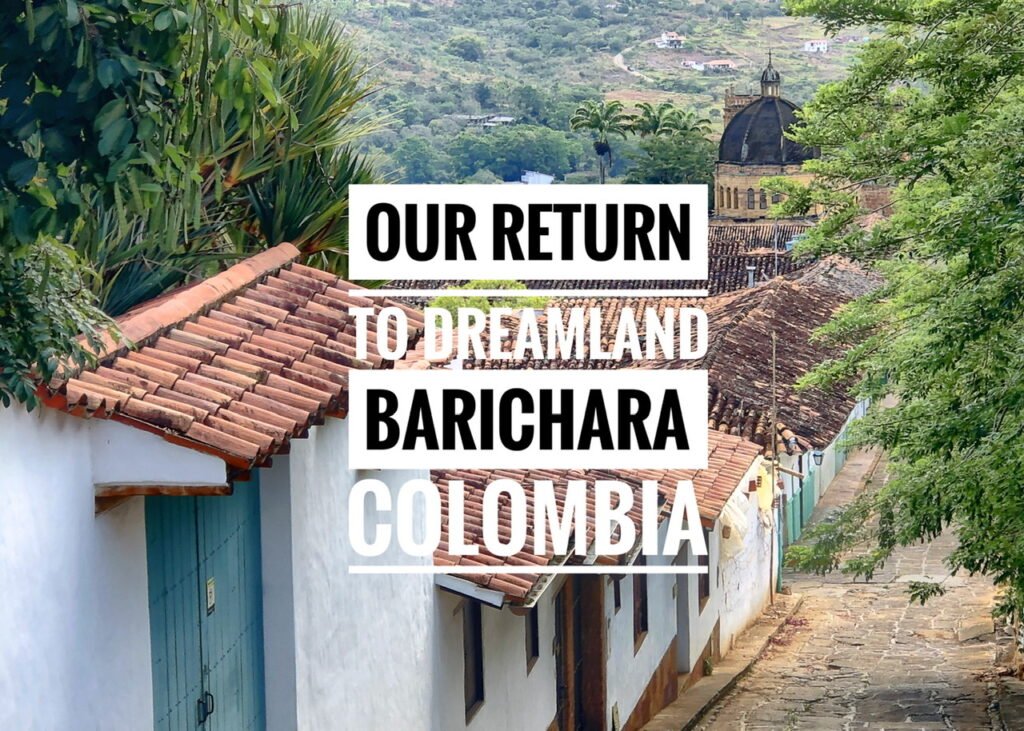
Barichara is without a doubt one of our favorite places on earth. Not only charming…., but utterly dreamy…. quixotic …. a starry-eyed hamlet. Its Spanish colonial architecture, uniform red-tile roofs, undulating wide cobble-stone streets, and white-washed homes with perfect peekaboo windows…all emanating the aura from the pages of a romance novel. And, for this good reason, Barichara is often the setting for Spanish-speaking telenovelas and movies. Our week in Barichara in 2021 marked our second visit to Barichara. We first left a piece of our hearts here in 2014 during our honeymoon and know we’re breaking off an even bigger piece this time. Next time we come, it’ll definitely be for even longer. But first, we had to get there…
Getting There (Is half the fun?)
Salento—>Armenia—>Bogota—->Bucamaranga—>San Gil—>Barichara.
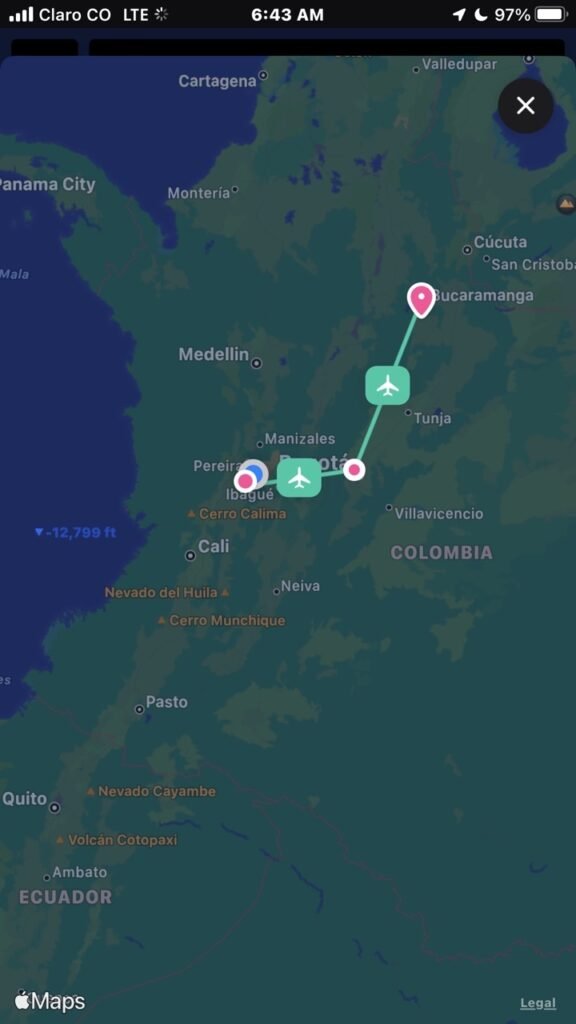
We would have never have normally made a leap this lofty, but our friends were in tow and we were eager to take them to this dreamy land which remains our favorite place in Colombia and arguably, the world. (Depends on who you ask!)
Regardless, we were traveling again (and exhausted!) On this particular day, we piled on 8 types of transportation (2 taxis, 3 buses, 2 planes and a tuk tuk) to head from the cloudy/drizzly coffee region of Colombia to drier and sunnier grounds in Santander.
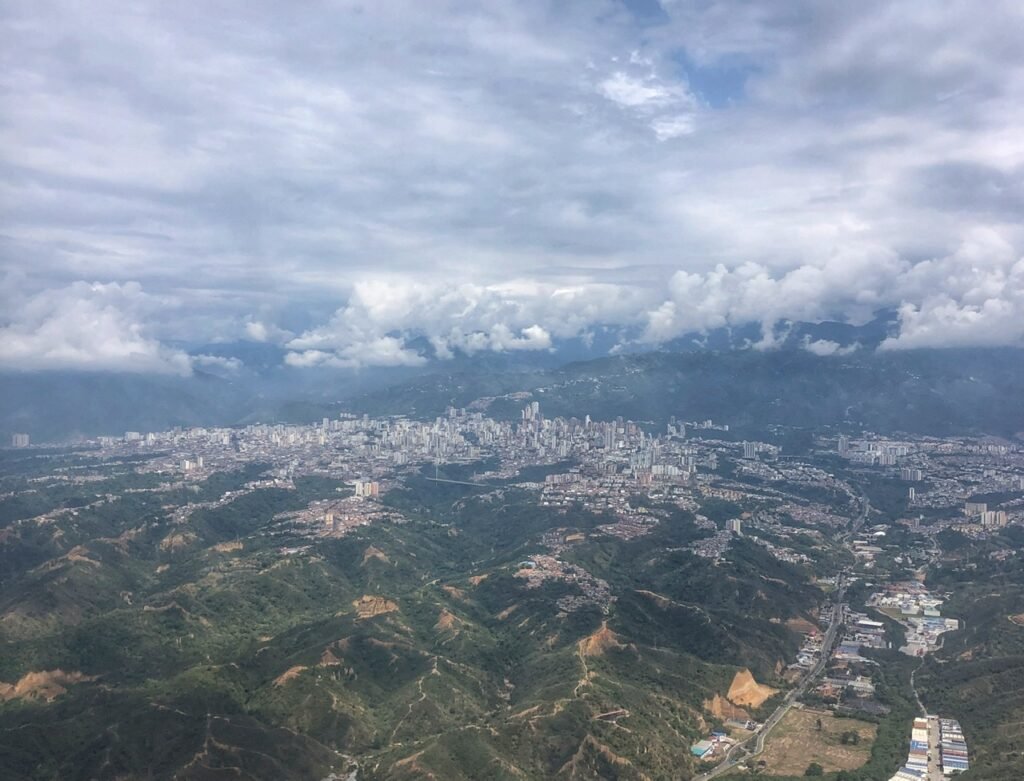
Flying into Bucamaranga, or affectionately known as Buca, by the locals. This city of just over a half million is the fifth biggest in the country and was actually the number one place we had in mind when we wanted to check out locations for our brewery. For us, based on research, we had decided it ticks all the boxes. We still have yet to spend substantial time here, so this will be a big priority for trip three to Colombia.
P.s. Their airport is kinda fascinating. It feels like you’re flying into a colossal ironing board, as it’s on giant plateau overlooking the city. The plane tickets were about $100 each. Flying is incredibly cheap within the country.

We can afford to eat at airports in Colombia! Grabbing lunch at Willy’s overlooking the city. We had two sandwiches, fries, and two juices for $32000 pesos. ($8)
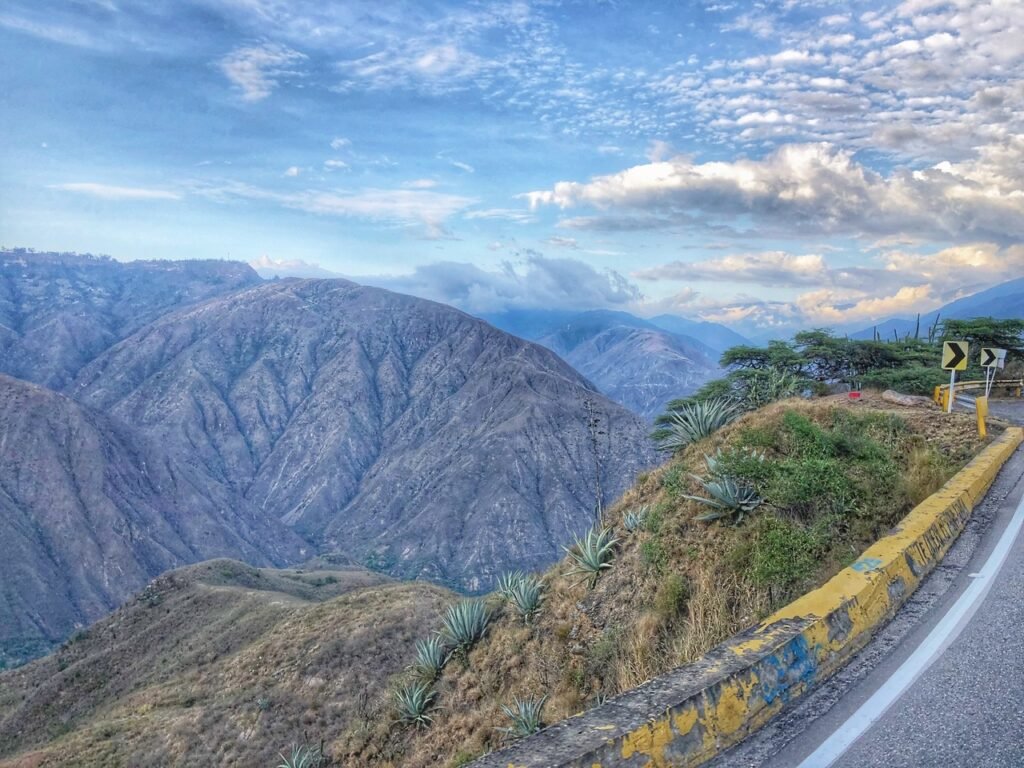
The bus ride from Bucamaranga to San Gil is like riding on a roller coaster. A really stunning one.
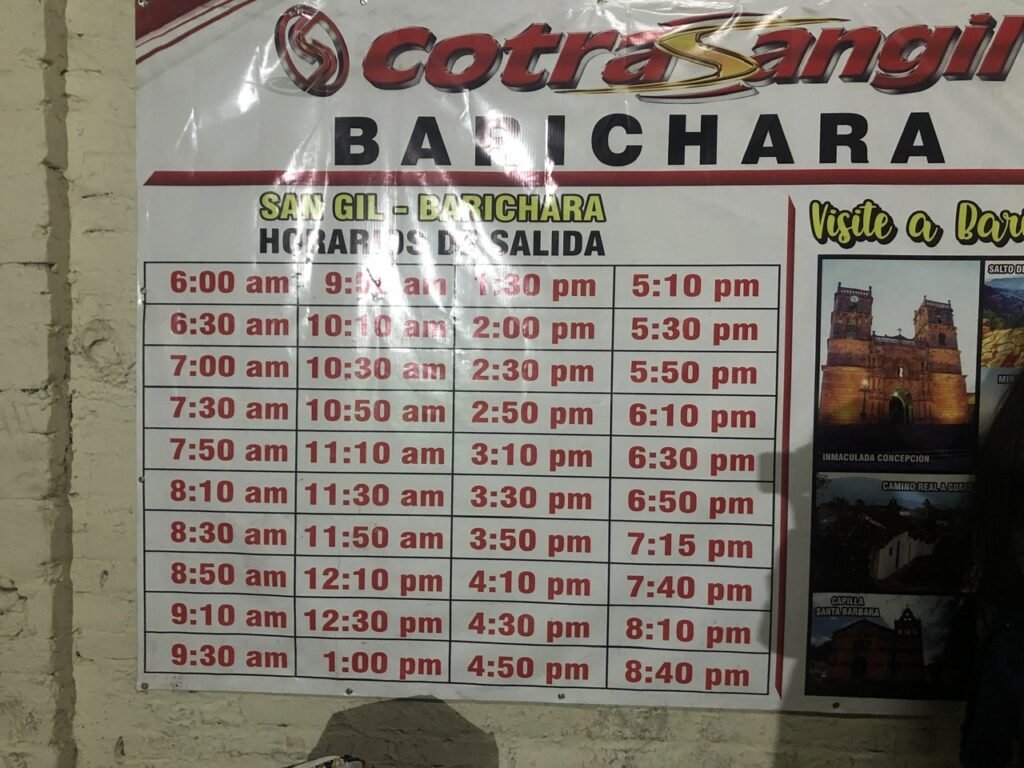
When we arrived to the international bus station in San Gil (Colombia’s Adventure Capital), we found out we then had to transfer to the Terminal-Ito to catch a baby bus bound for Barichara. After trekking con luggage through the Christmas-blasted and hopping town for 15 minutes, we were delighted to learn there were still ample bus options. (We read that the last bus to Barichara left at 6:30 and we were well past!)
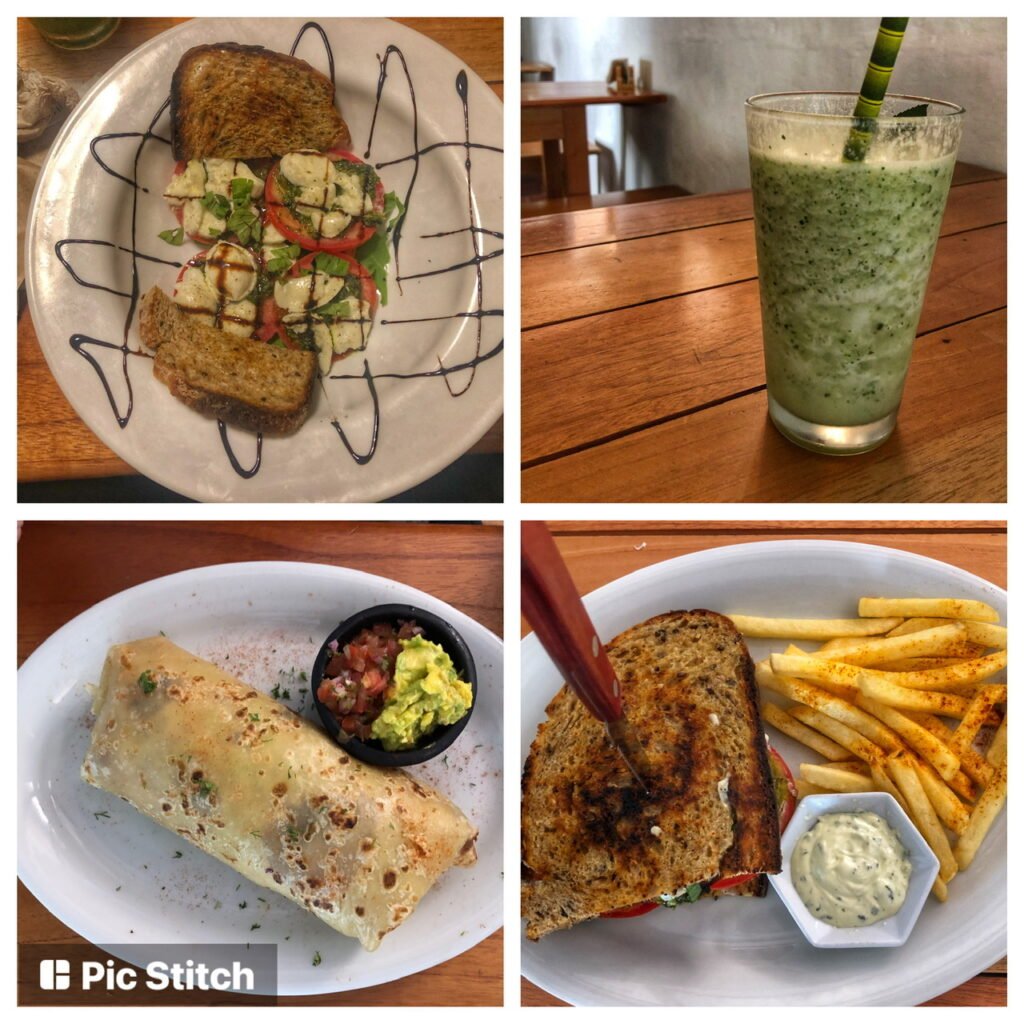
We arrived in Barichara at 8:00 pm, 14 hours after our departure time in Salento, and were completely famished. So what else do four gringos do for dinner? We went to Gringo Mike’s and holy crap was it some all American deliciousness! Yes…it definitely tastes good every once in awhile ?
Accommodation in Barichara

Unlike other areas of Colombia we had traveled so far, the sun was glowing nearly every day in this deliciously warmer and drier part of the country in the Santander province. The terrain, a bit reminiscent of New Mexico, is another big reason we love it. Unfortunately, we are not the only ones who feel this way about Barichara. It was Christmas week and the town was loaded with visitors. We believe these were mostly affluent ones from Bogota based on the cars they must have maneuvered with obscenities amongst the compact corners and high-curbed streets. Disappointingly, these cars had replaced the horses clopping on the wide cobblestones we had experienced in 2014, which certainly detracted from the ambience. Clearly, Barichara has been discovered. At least during the holidays. Fortunately, we’re tucked up in a tranquil finca cabin with a beautiful view with the optional, not immersive, celebration experience.
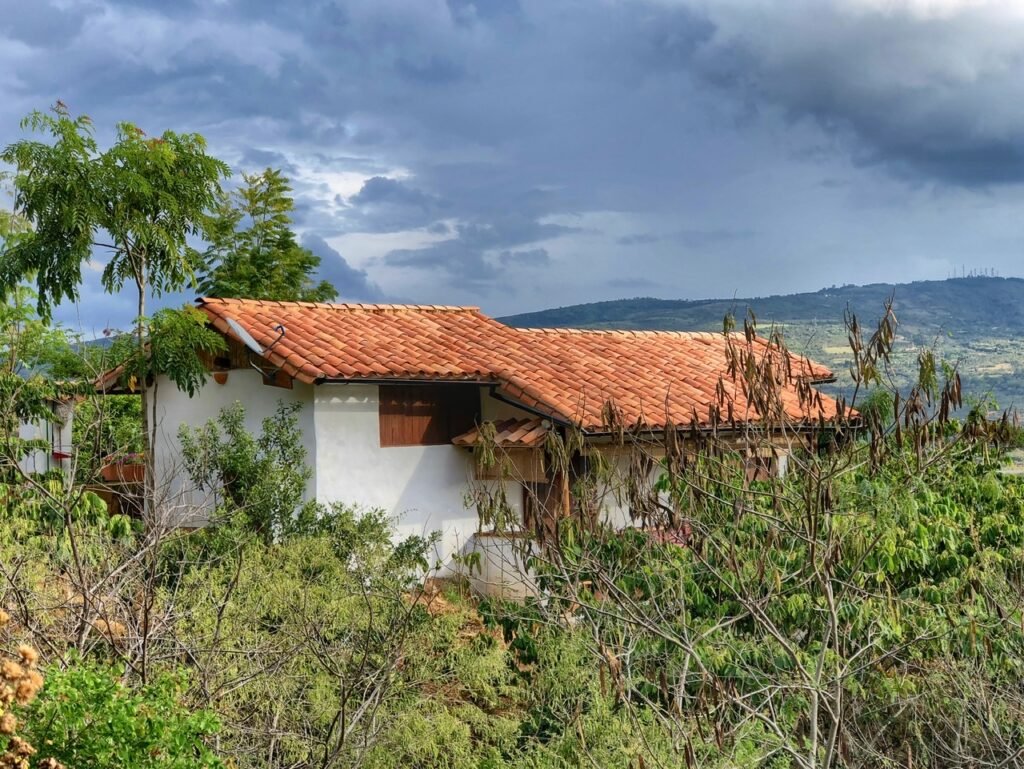
Our cute as a button private cabin for eight nights found on AirBnb. It was over budget at $35/night, but since we had done well in 2021, decided it was a well-worth-it year end splurge. We’ve also already got plans to rent it for a month in the future for much less (around $500.)
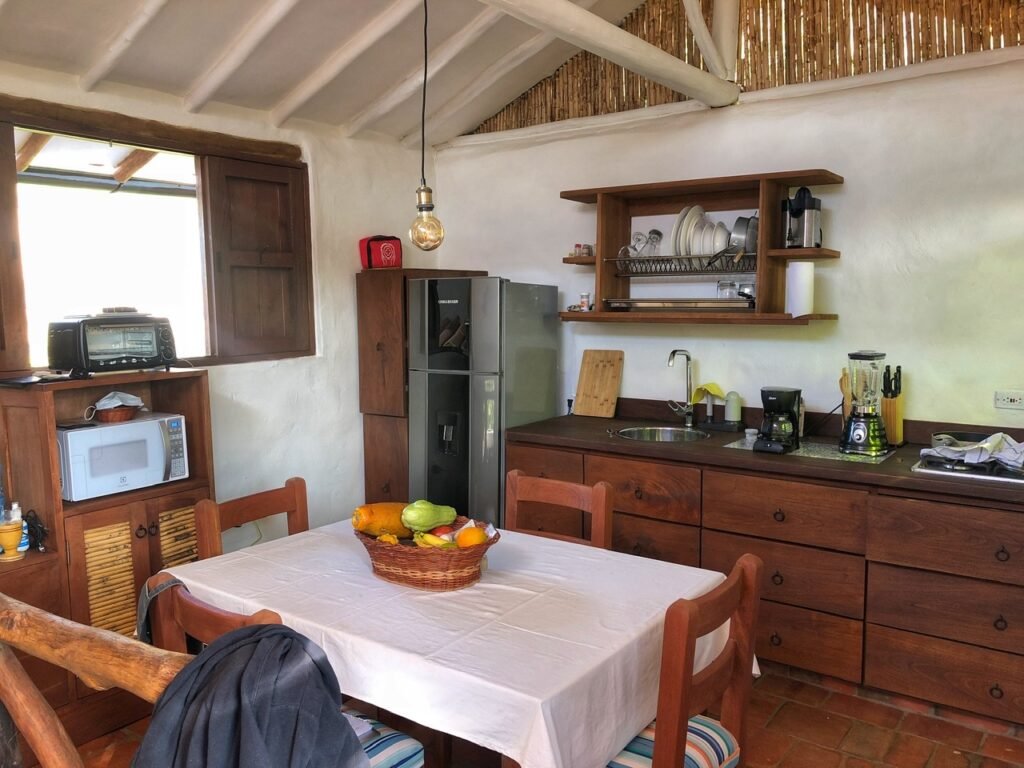
We had a fully equipped kitchen to make Christmas dinner in. Our host also sweetly left us a massive basket of fruit as a welcome gift.
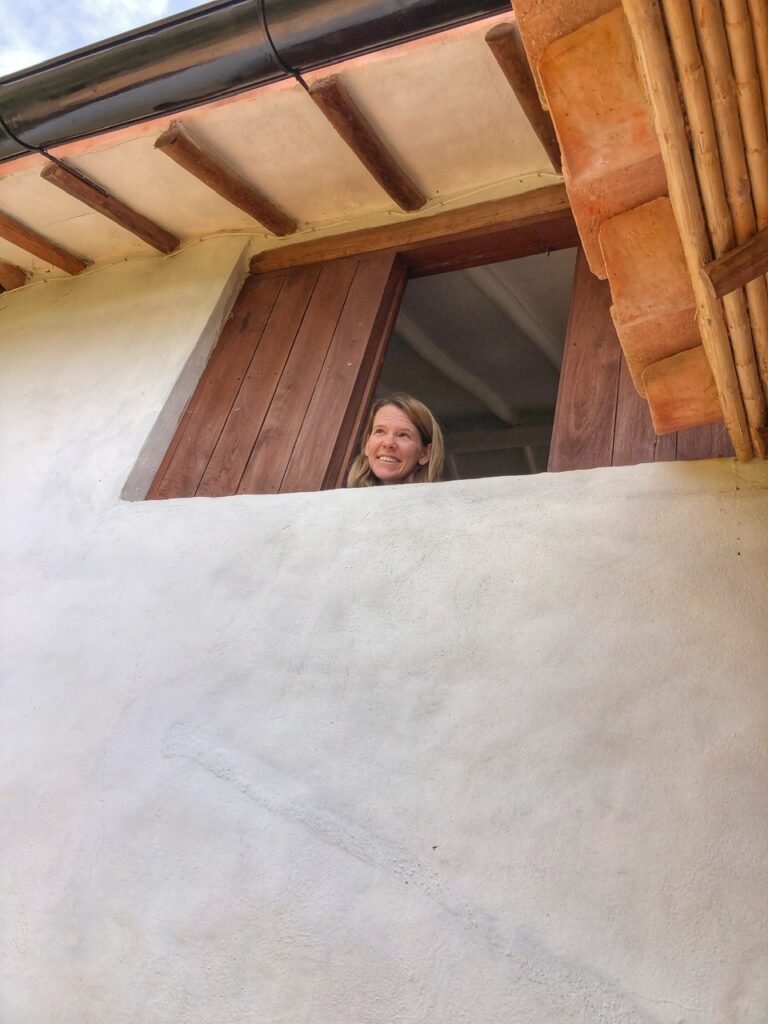
Mandy demonstrating the cute factor of the kitchen window.
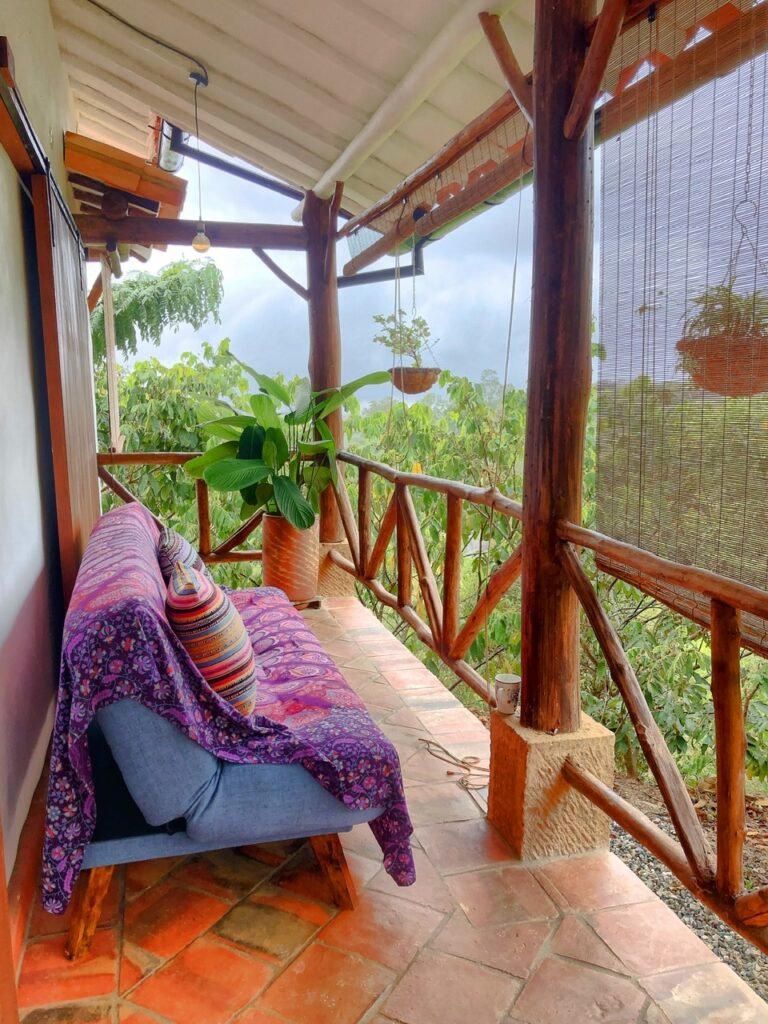
Our patio. We were inundated with sounds of insects and these funny-looking birds that look like pheasants, but sound a bit like a chicken crossed with the crank of a Model T.
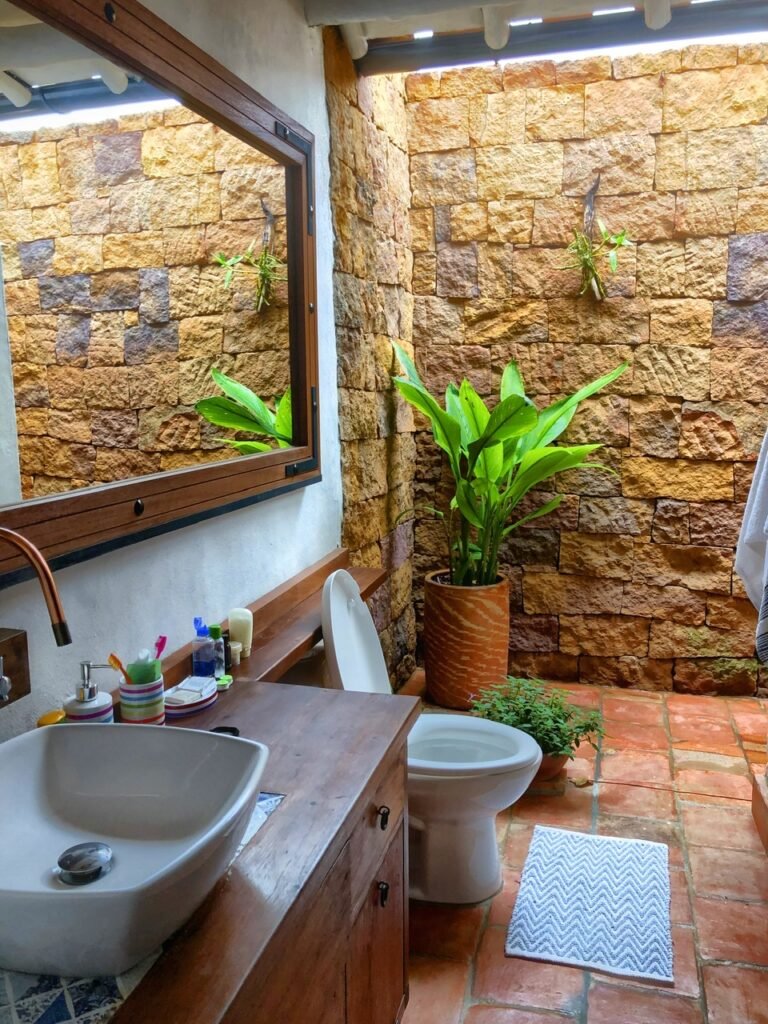
Love our open concept bathroom. It comes complete with the ocasional outside elements like leaves, ants and flower petals.
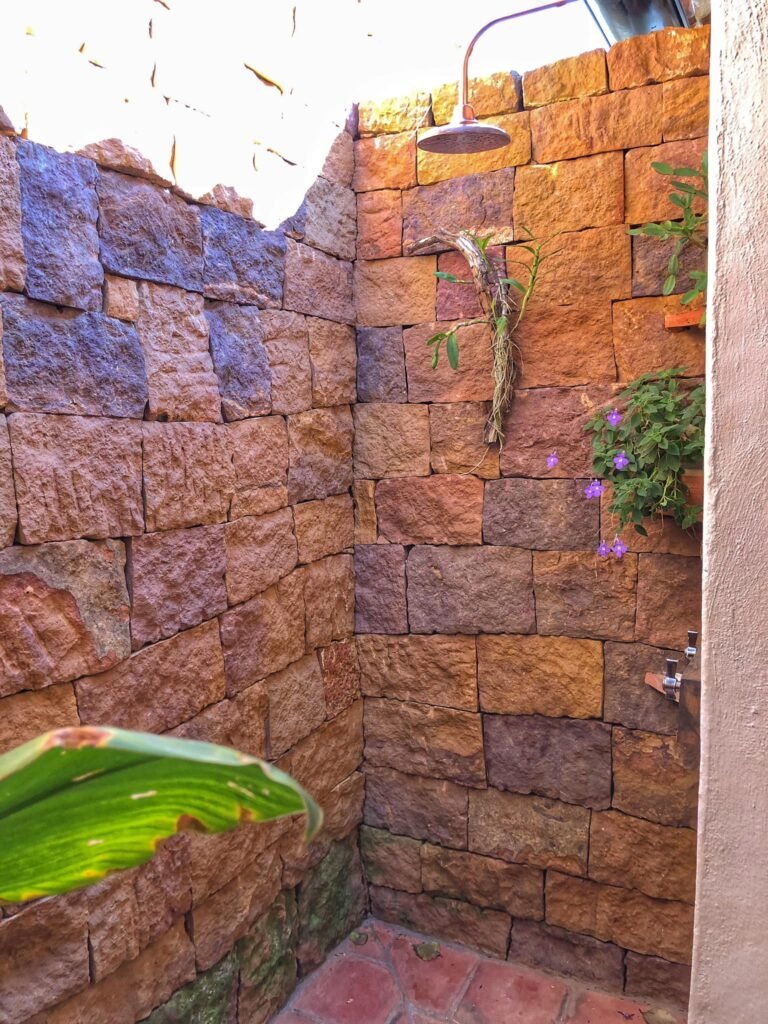

In fact, One morning, while standing on the terra-cotta drain, Mandy felt something tickle the bottom of her foot. Naturally, she squealed, jumped backed and then saw a diminutive frog peering his head out of the drain. She had clearly startled him with the hot water. He bounced out, crossed the bathroom, and weaseled his way through a crack in the stone.

The bedroom. The whole place has a ton of natural light.
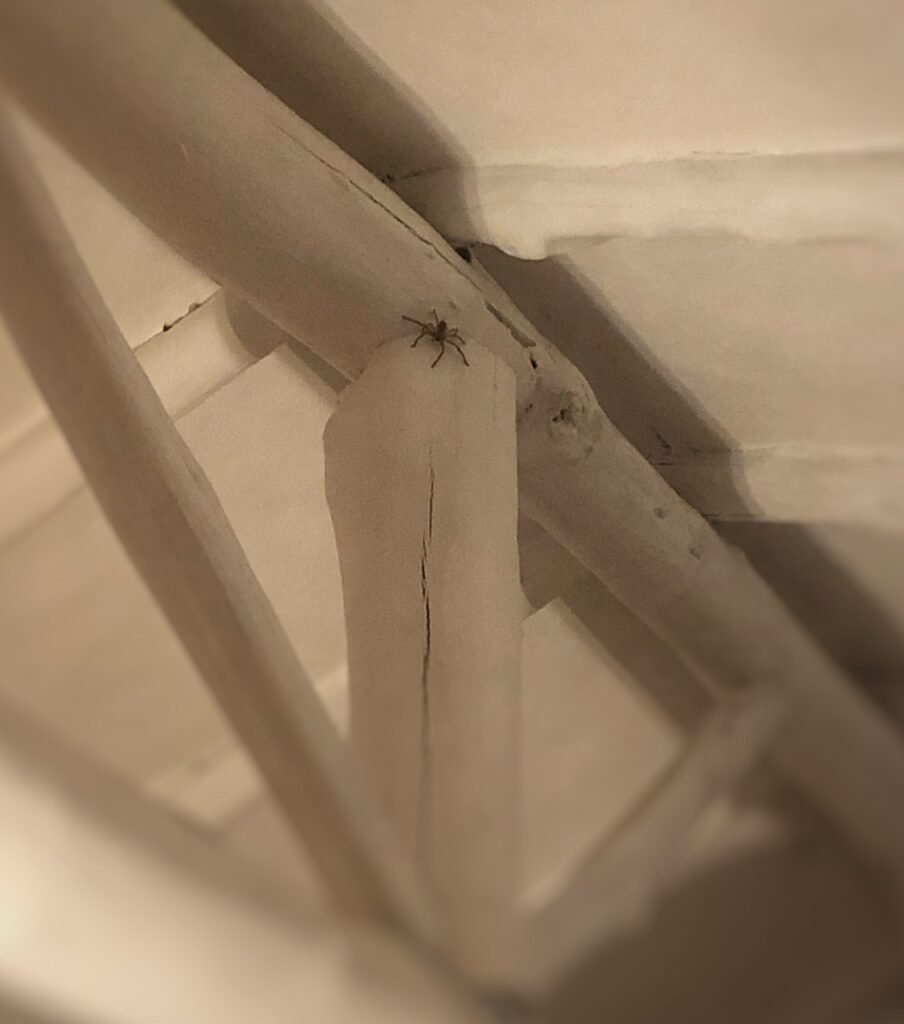
Not a creature was stirring…except a colossal spider lurking in the rafters on Christmas Eve.
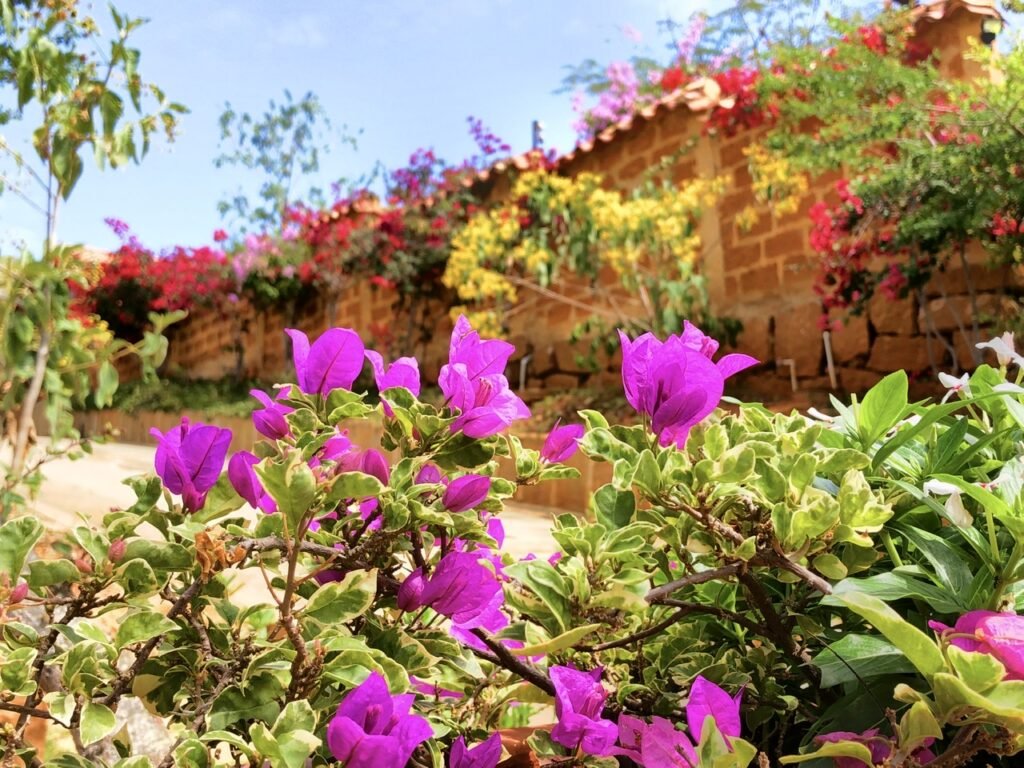
The front of our finca was bursting with color.

Mandy in front of the finca. In case you missed other posts, it cost $35/night…a splurge for us.

The finca was a very pleasant 30-minute walk to the town. Every day, to get to and fro, we had to skip down this yellow-brick looking road. There were no scarecrows, but the plant on either side of the path were loaded with…coca leaves. Maybe the munchkins put them there. We didn’t have a nibble just yet. We’ll save that experiment for our next destination.
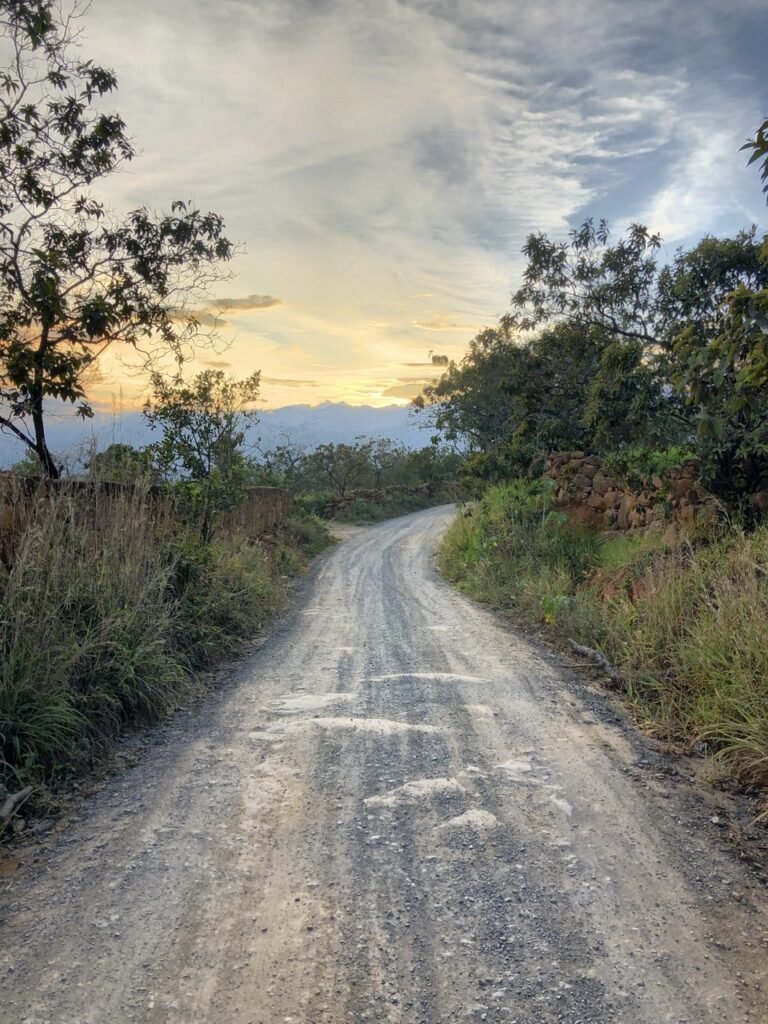
The gravel road into town. It was often seen zipping with tuk tuks and scooters. We took a tuk tuk upon arrival and departure with our bags, but the $3 fee didn’t seem worth it when we could instead get some exercise amongst a stunning landscape.
Soaking in the scenery of Barichara

The 300-year-old town of Barichara was declared a national monument in 1978 and has undergone extensive renovations since then. The streets of this town are what make it just extraordinary and the original stones were brought back to life during that restoration.

What is it about those mammoth-sized cobblestones? The town’s narrow streets are lined with colonial era facades featuring clay roof tiles and bare adobe walls that dazzle without effort in the savory Santander sun.
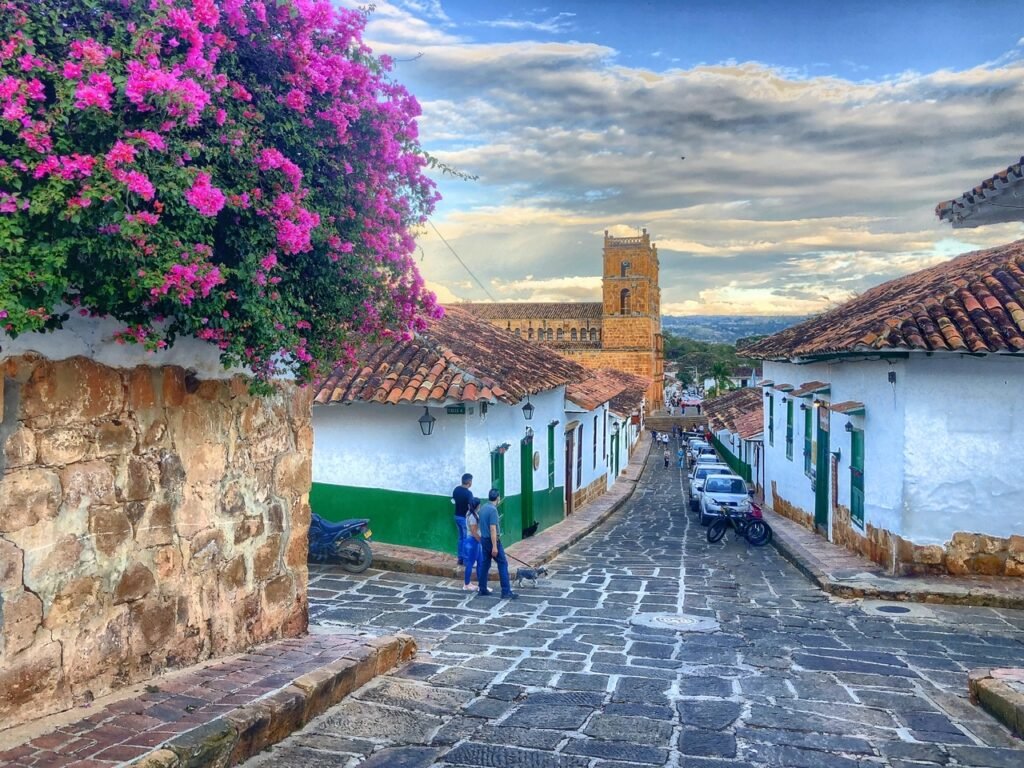
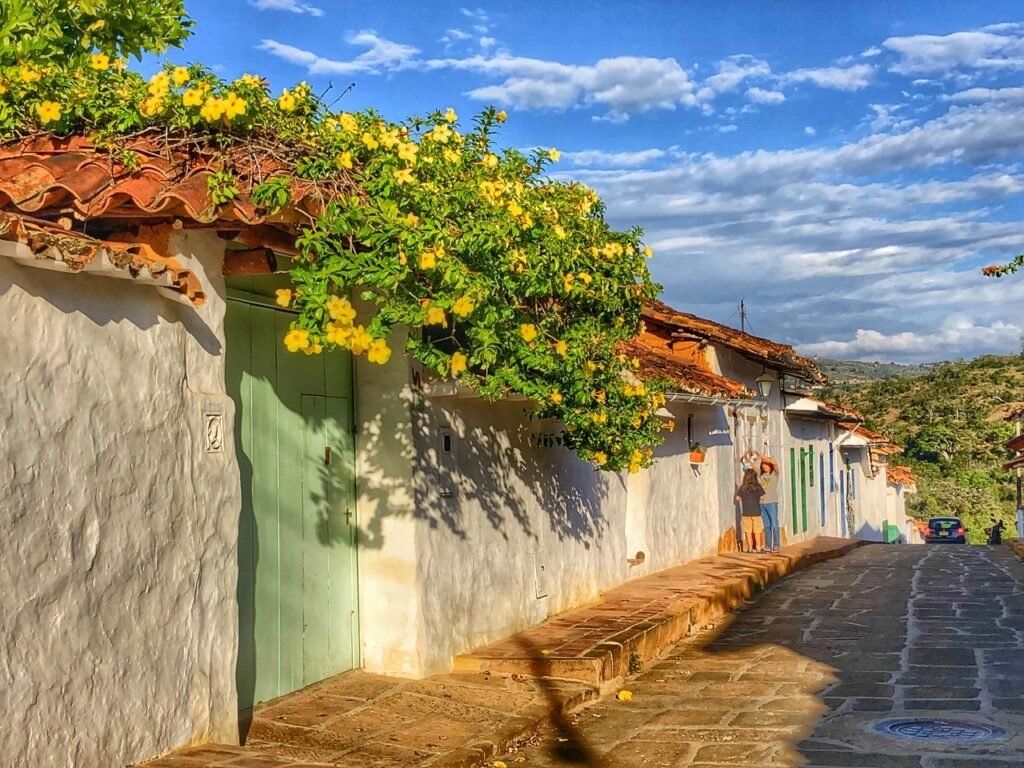
Arriving to town where we spent our free time simply wandering and admiring. The flowers were flooding over walls…everywhere.
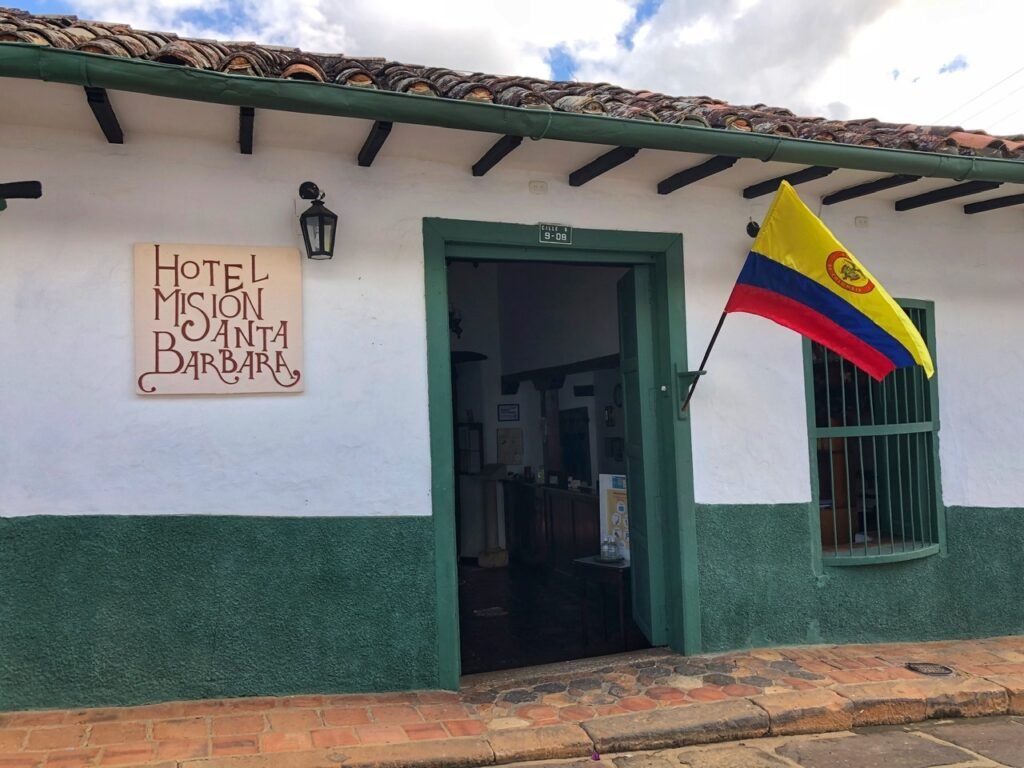
We stayed at the Hotel Mision Santa Barbara when we were splurgy honeymooners in 2014 for around $55/night. It was the first hotel in the town built about 250 years ago and is perfectly preserved and authentic. Defintely recommend for anyone with a little more cash to drop.
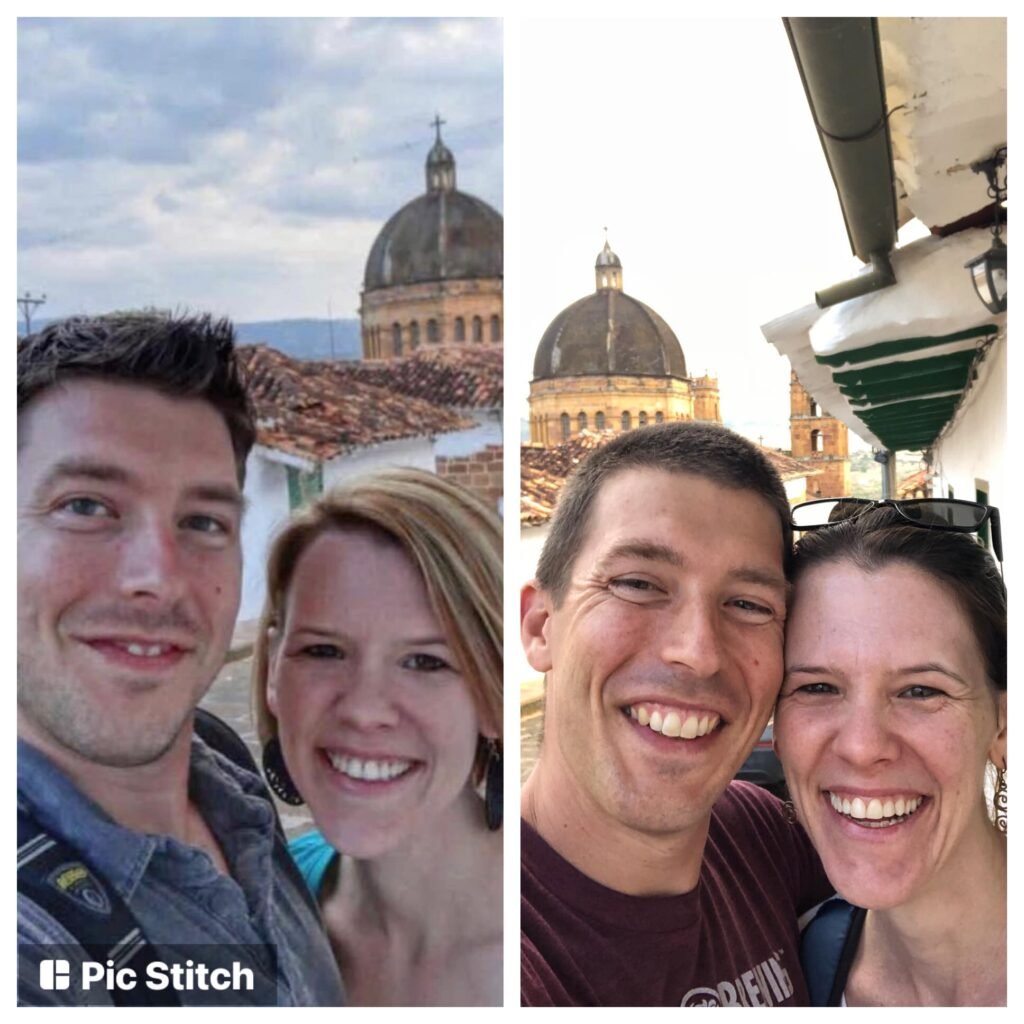
Recreating a photo from 2014.
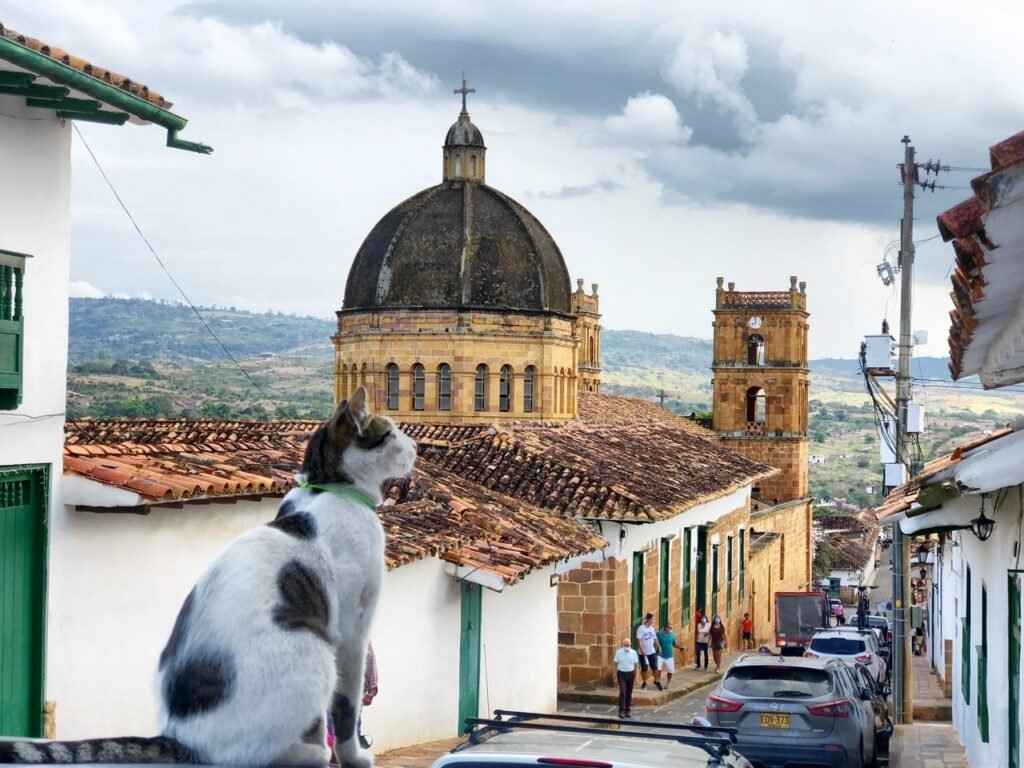
Two things Mandy adores…cats and this particular street in Barichara. For this reason, perhaps her favorite photo she’s ever taken.
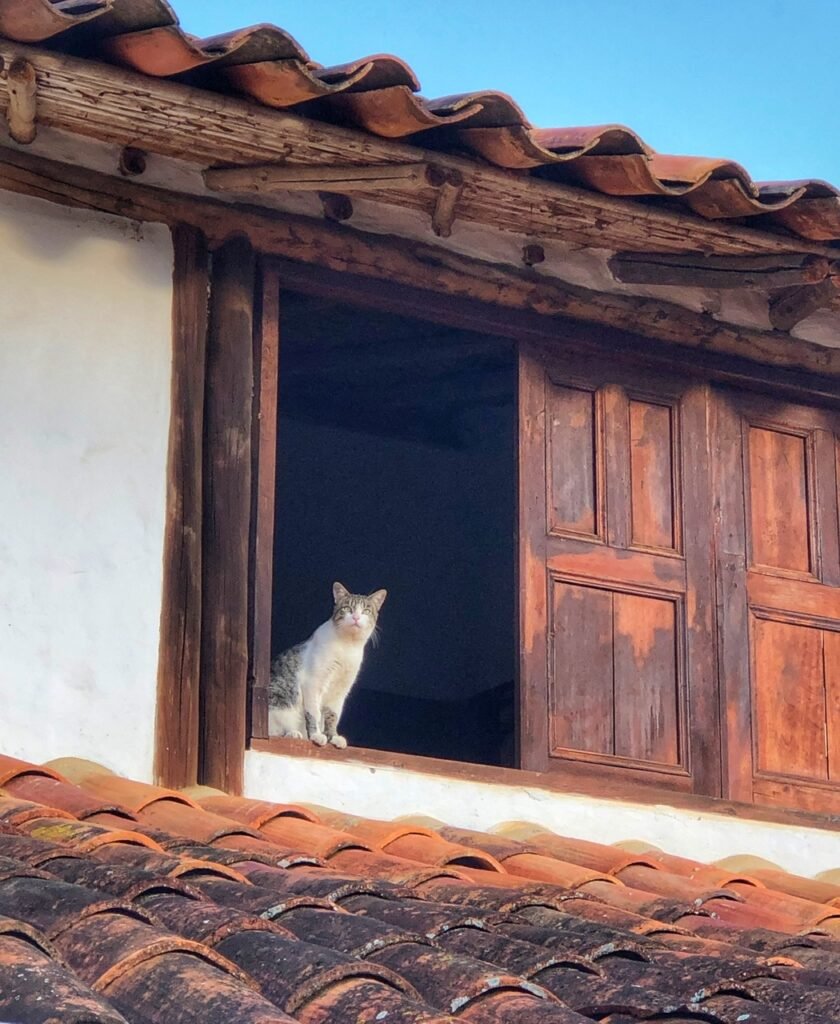
More cats…
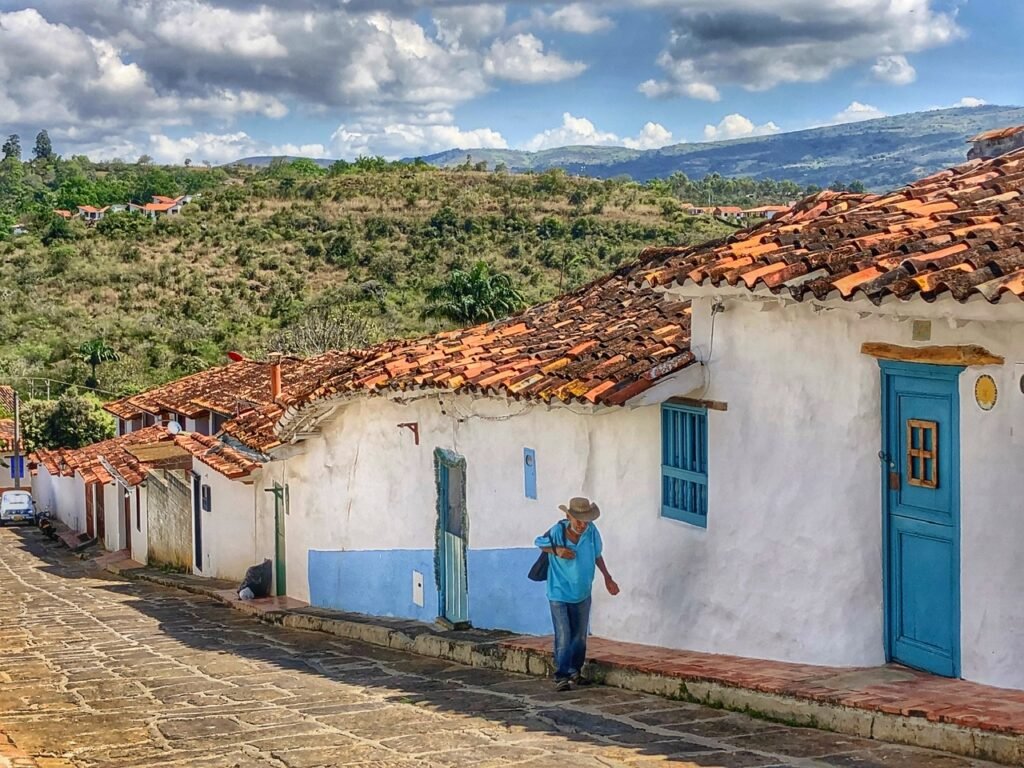
A local walking home

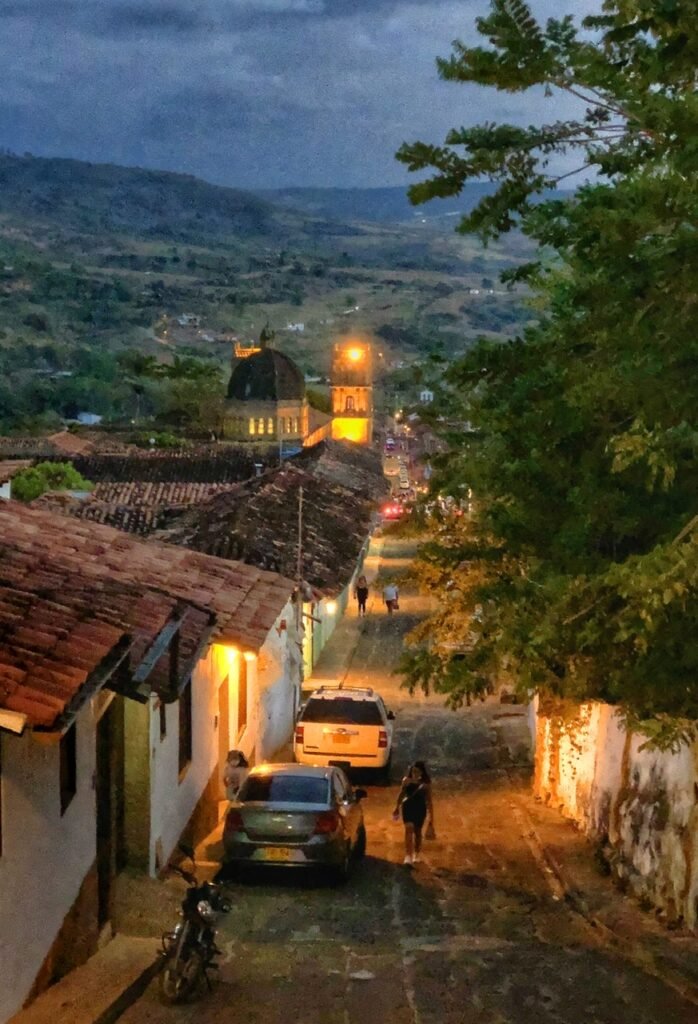
That iconic street by day….and night.

And although both day and night were stunning, what we were constantly chasing was the golden hour.

If Mandy could own this tuk tuk and use it to drive around produce, her life would be complete.
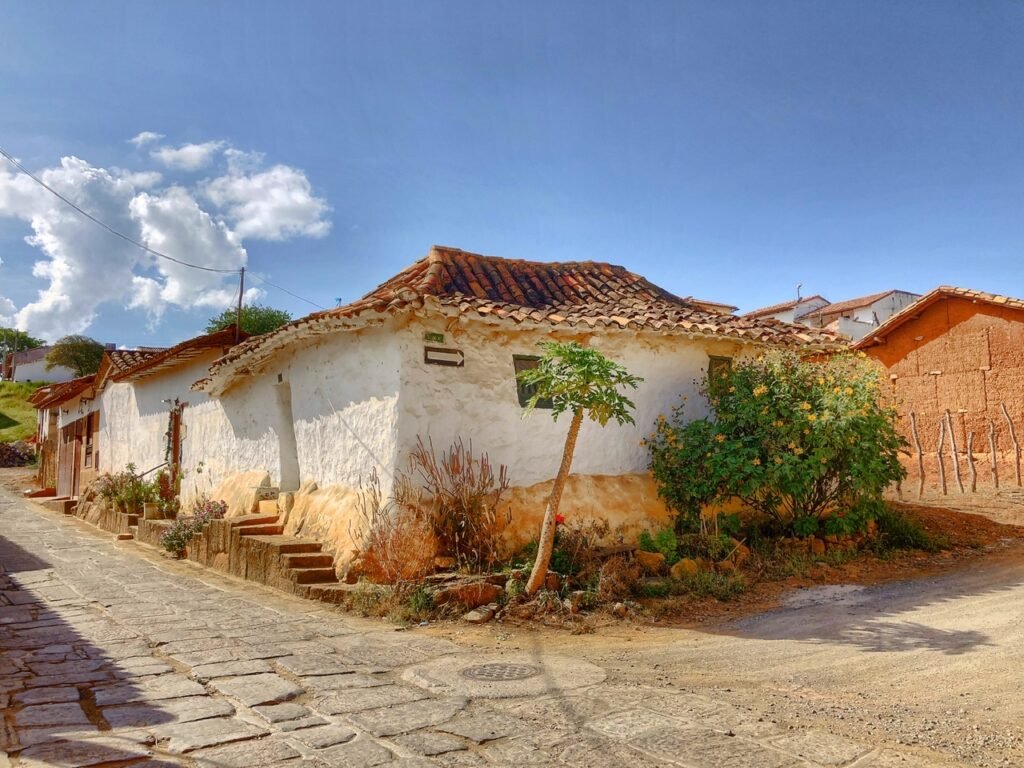
Some of the houses in Barichara look like they fell right out of a storybook. This rippling roof may have had a near-miss from a light-footed considerate giant.
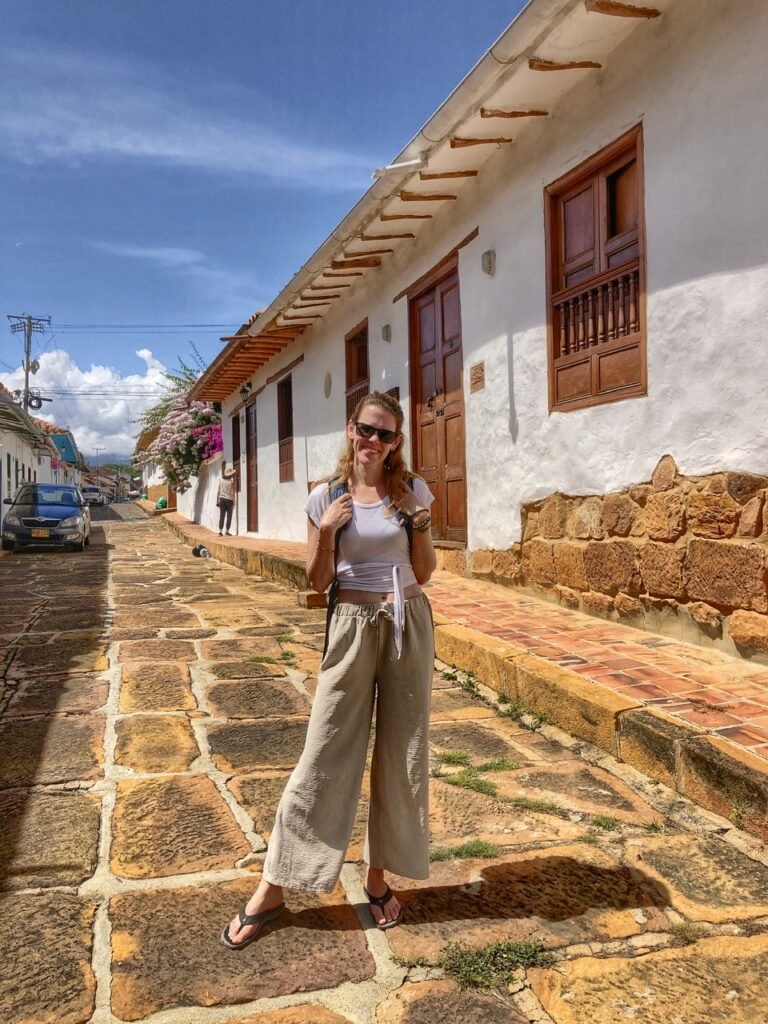
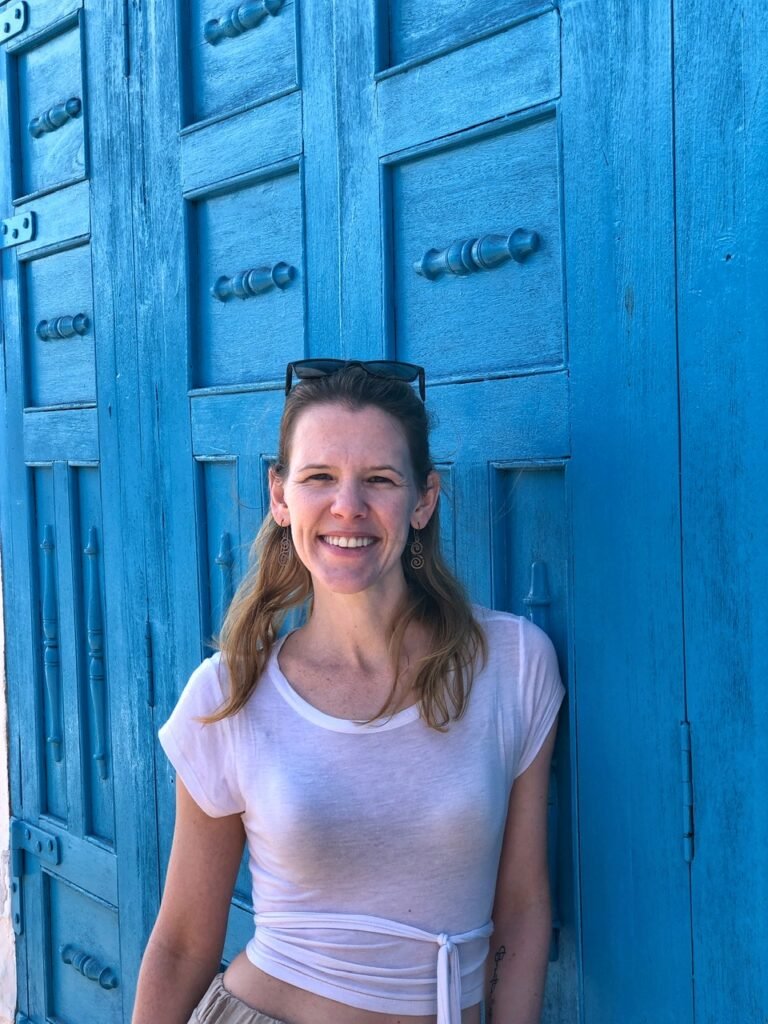
Soaking in the sunshine. It was typically pretty hot from about 2:00-4:00 in the afternoons so the fairest of us was constantly trying to duck in the shade.
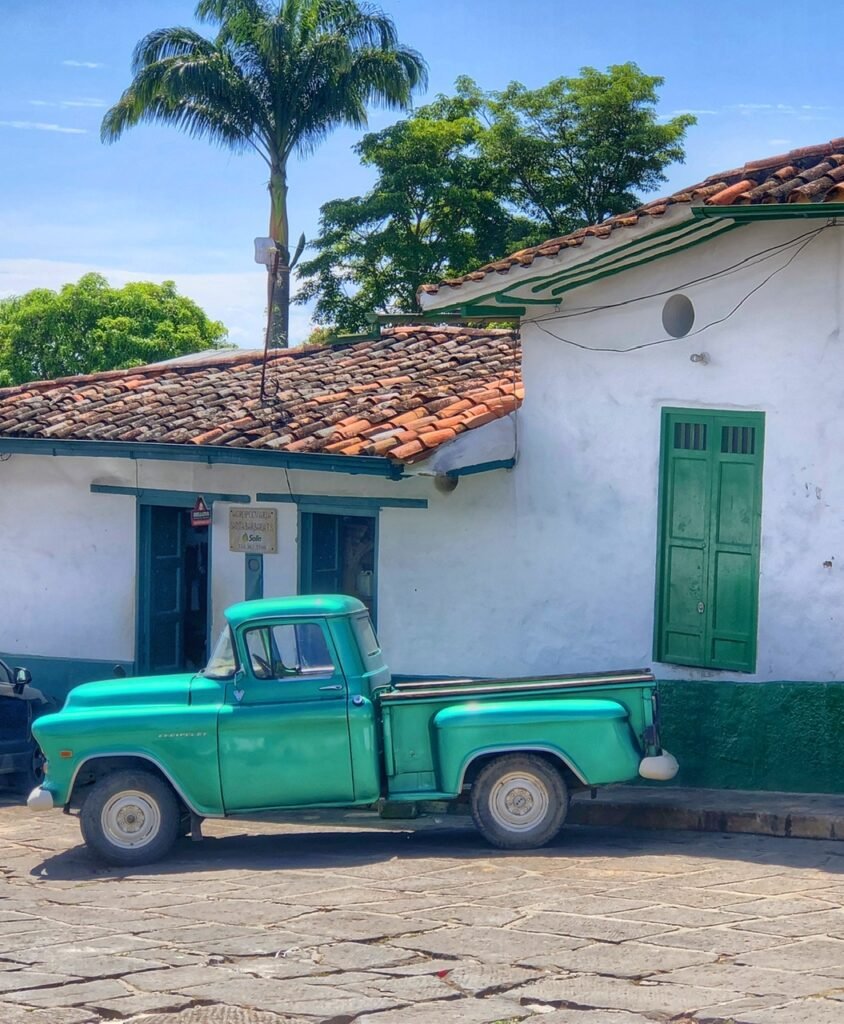
Loved the way this vintage pick-up truck made its mark.
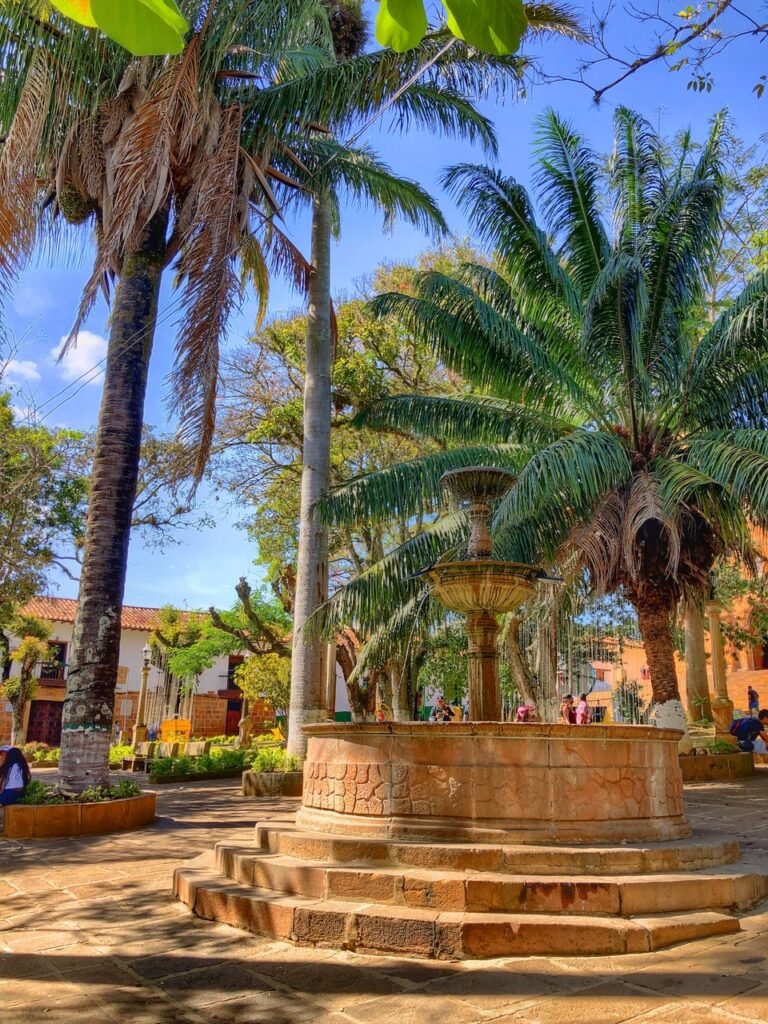
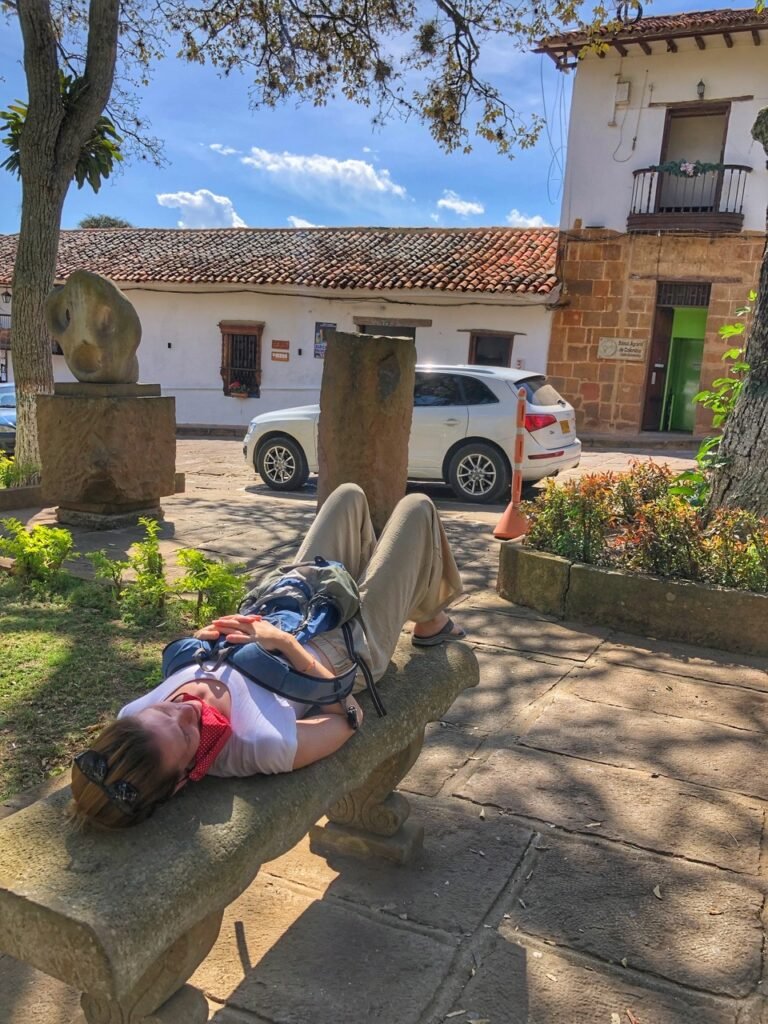
Greg takes photos of the fountain and landscaping of the main square….while Mandy takes a siesta.
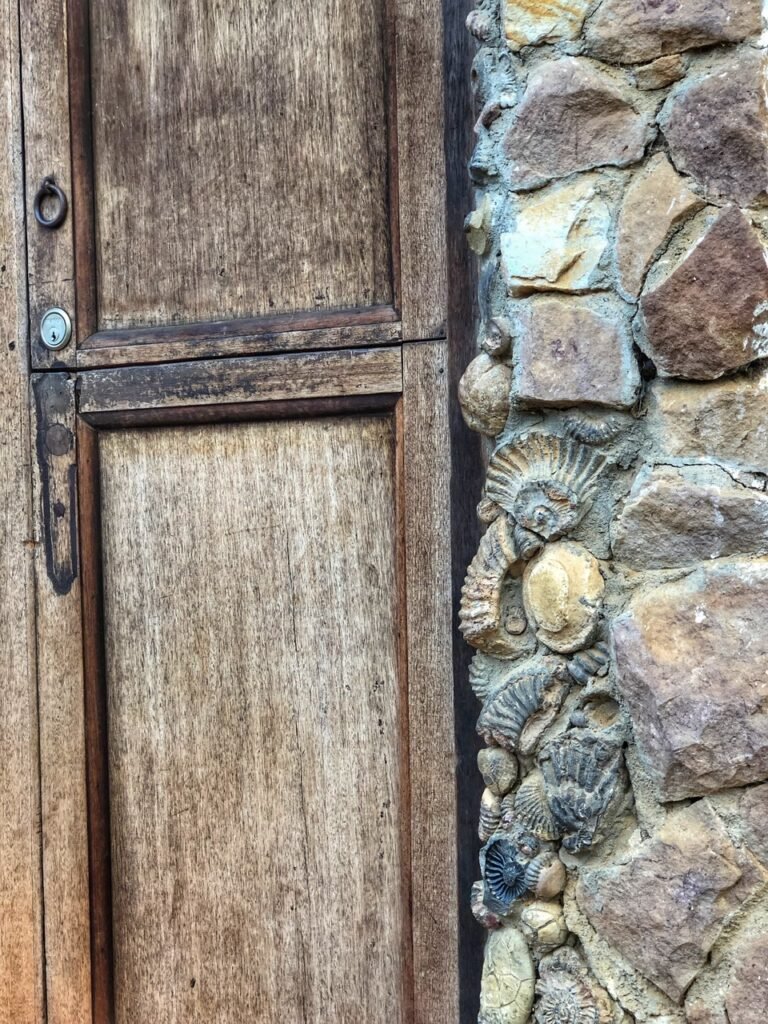
Another thing this region is known for? They have found ample fossils here. You have to have a keen eye for detail, but if you look closely, you’ll discover the fossils are uniquely built into door frames and other places throughout the town. This door is the bottom left of the gallery below.
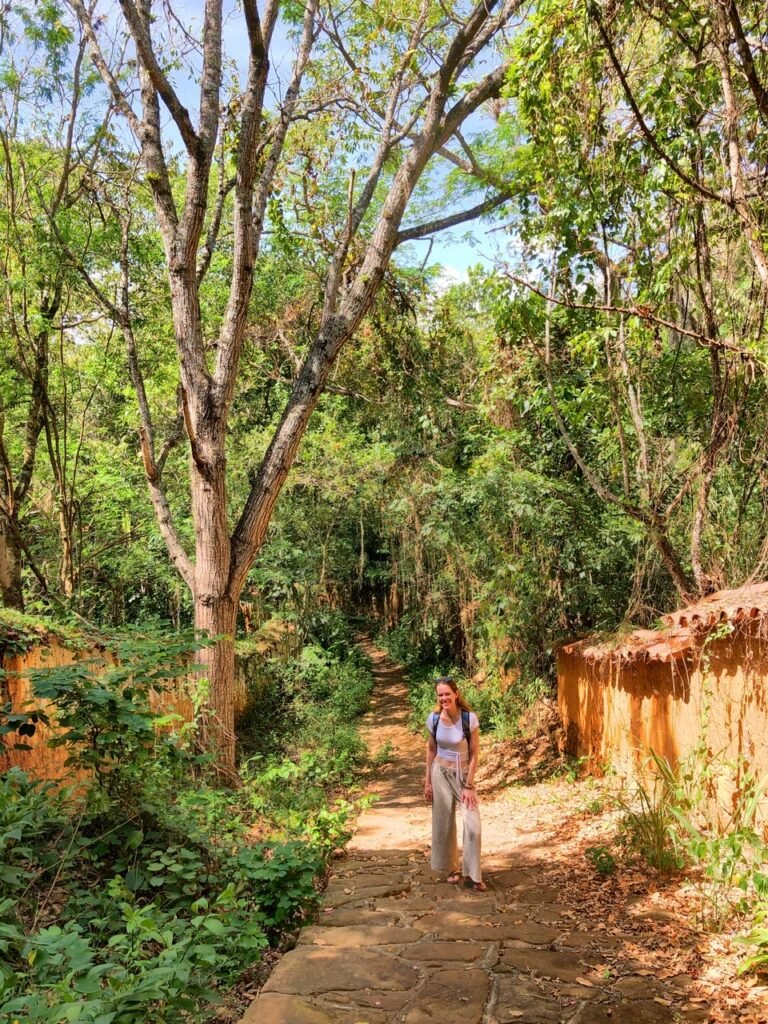
Barichara offers so many more discoveries in addition to its charming main streets. For example, we loved stumbling into this little green oasis perched atop an ancient trail on our walk back to our finca.
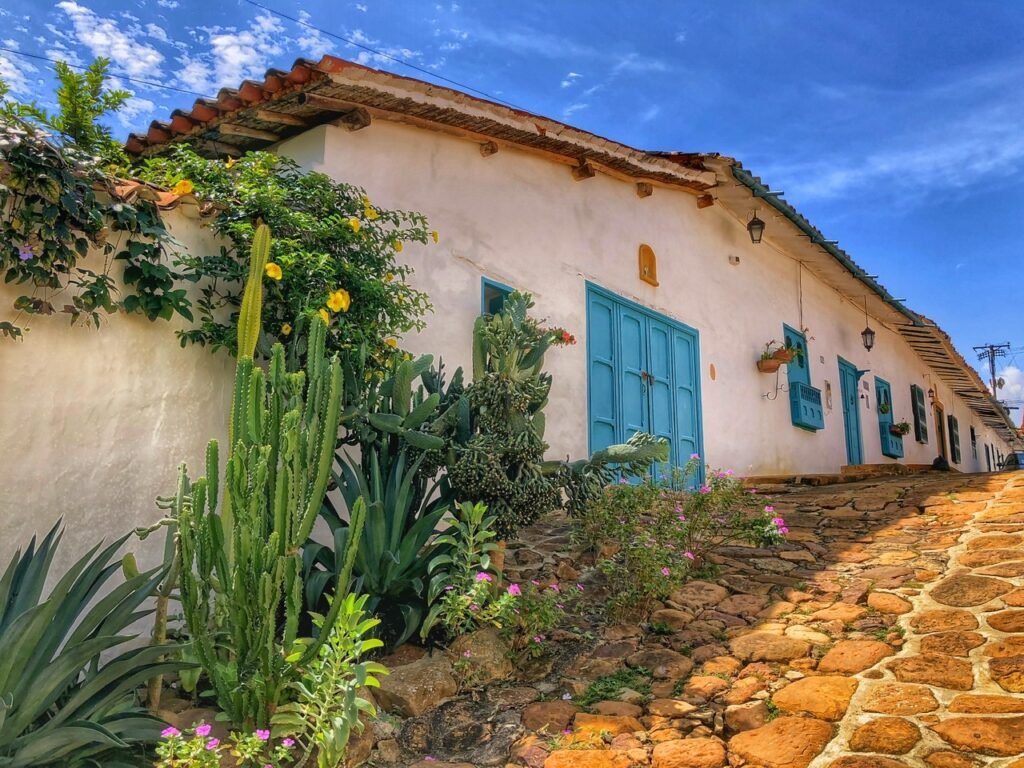
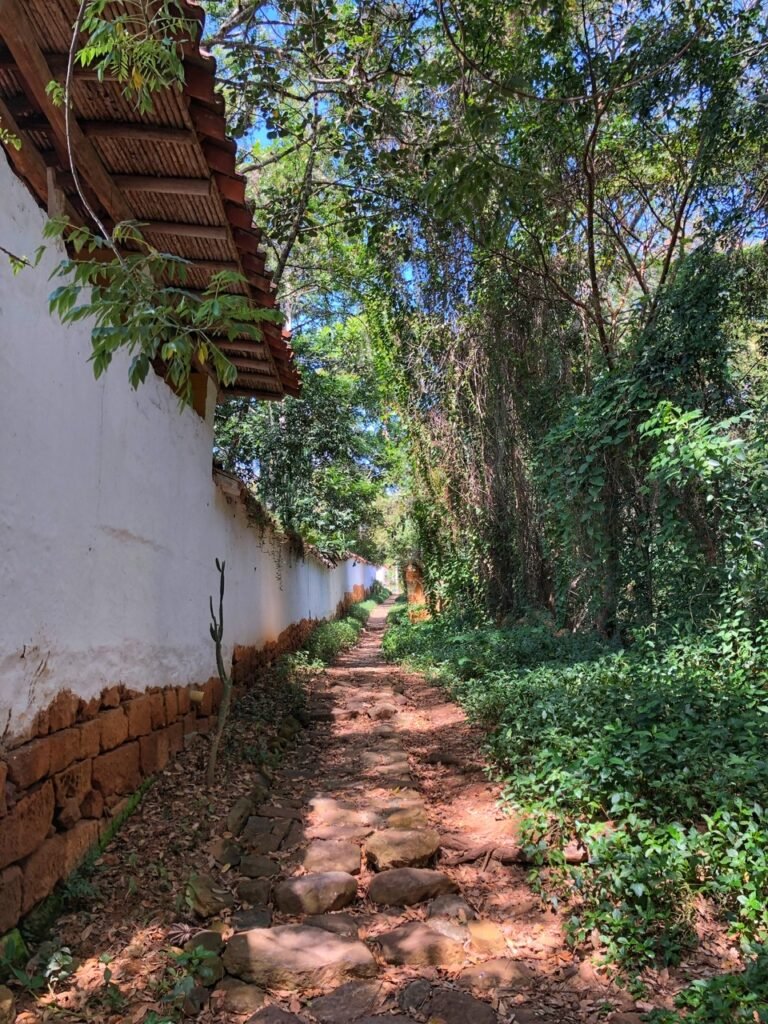
You get there from the main church by heading due east. You’ll meander down a hill, past this succulent garden, and enter into the woods.
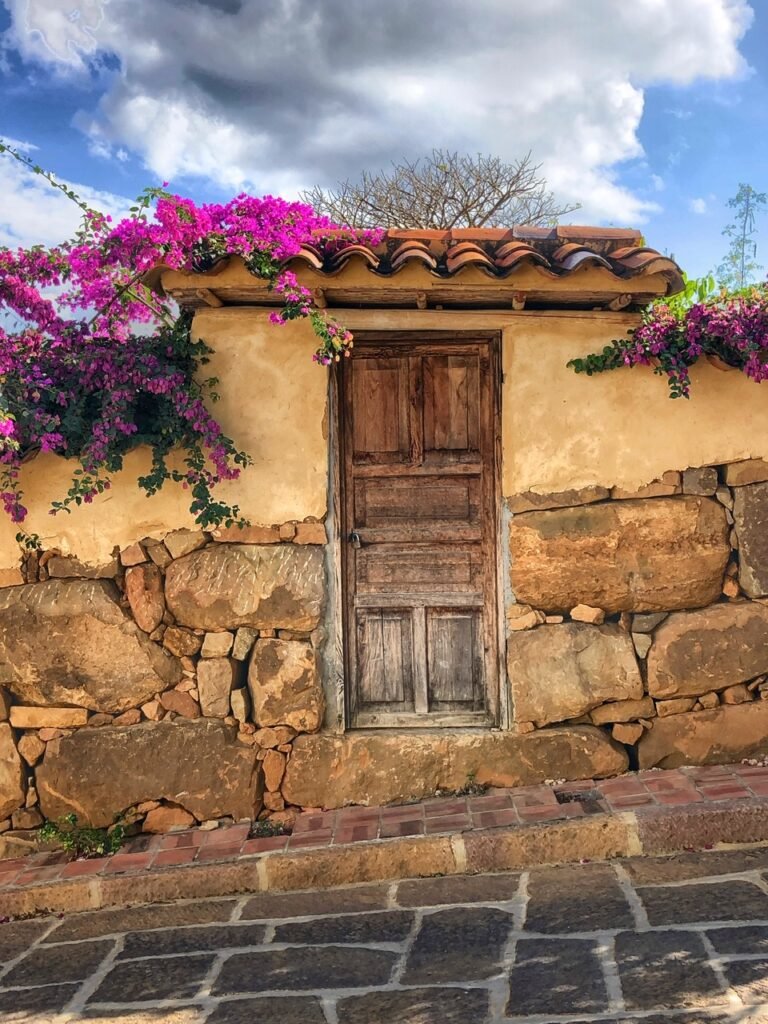

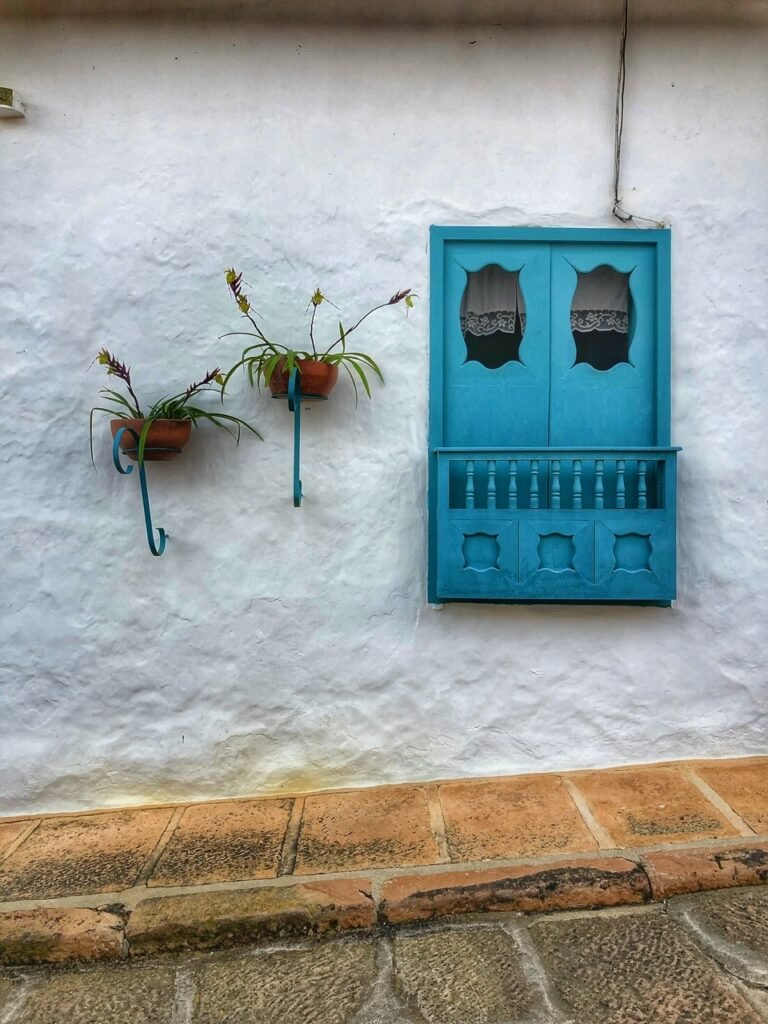
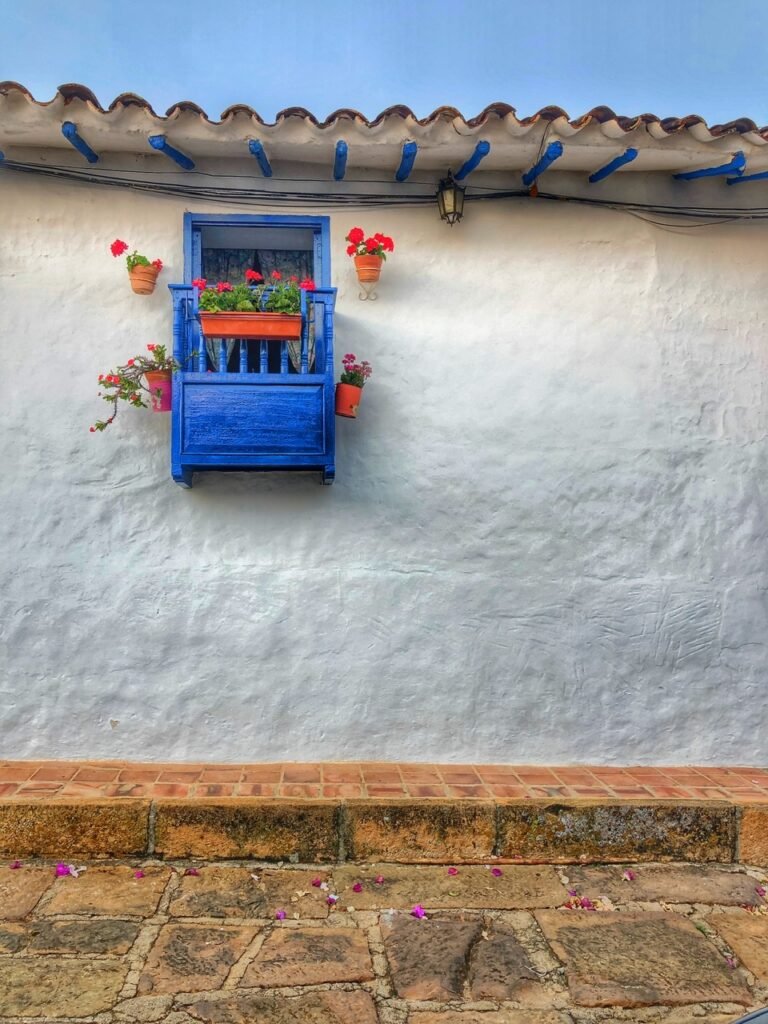

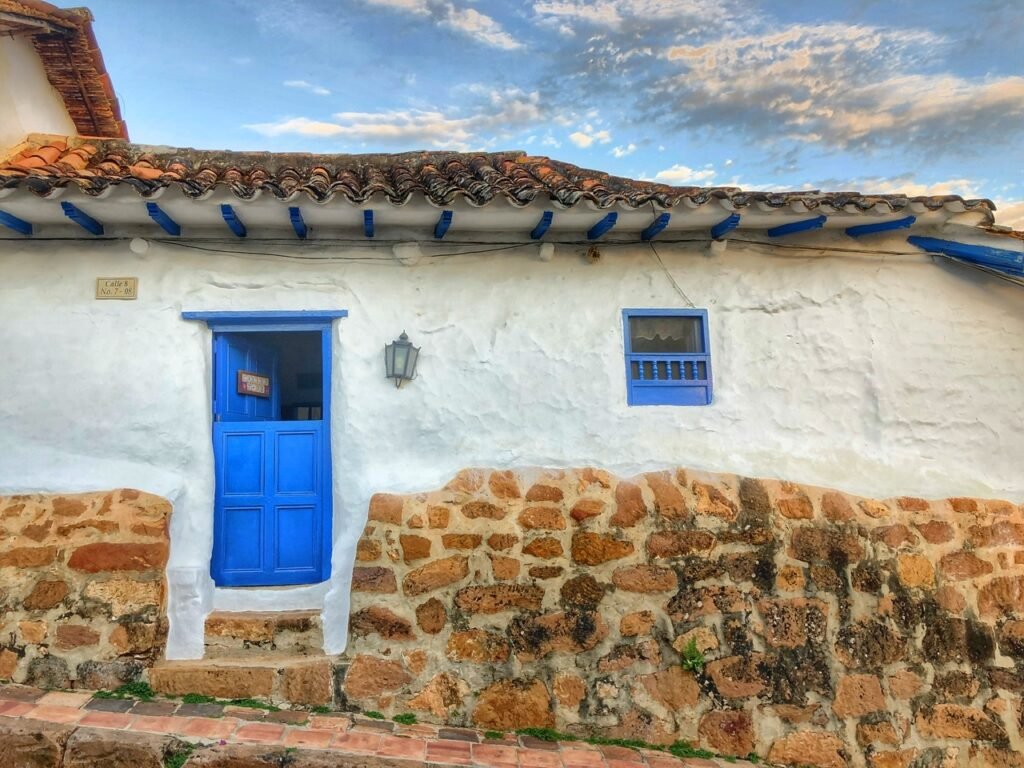
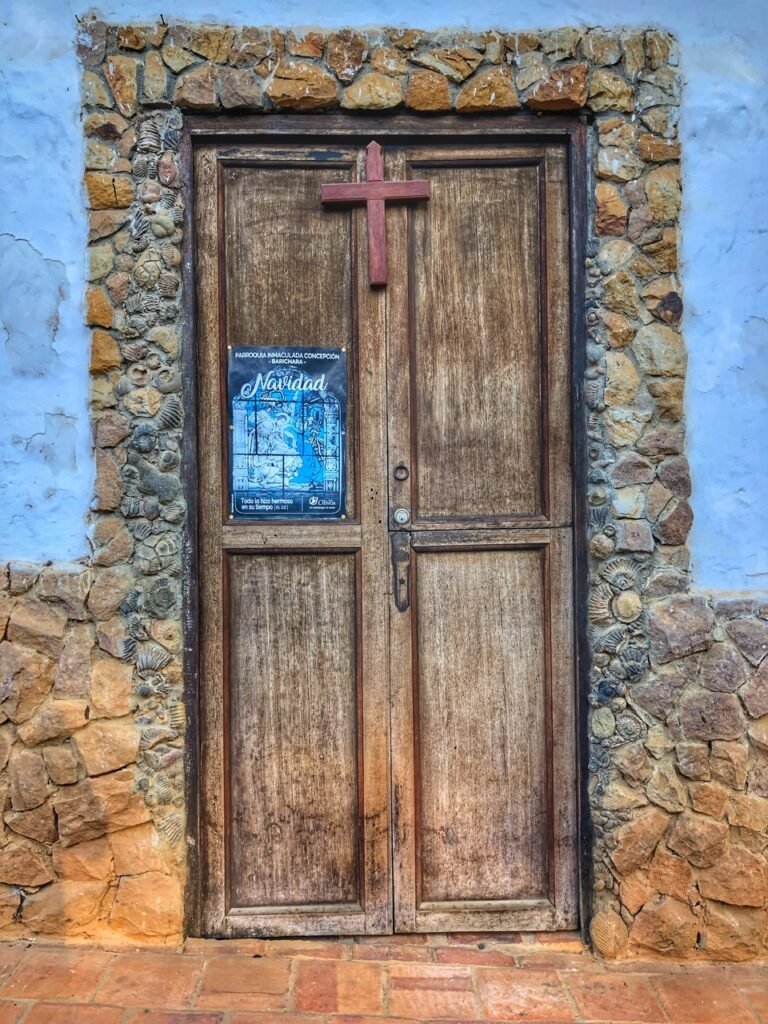
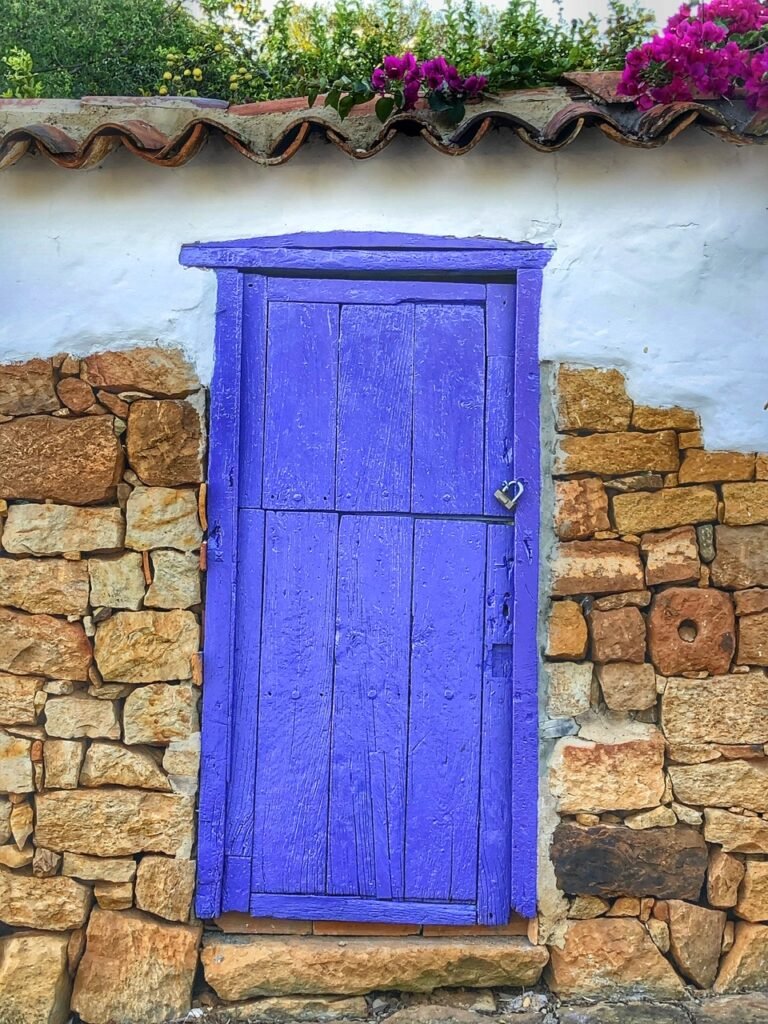

What is it about tiny doors and peekaboo windows that are just so captivating? One of the many things we love about the “prettiest town in Colombia.
Things to Do in Barichara: Visit Churches
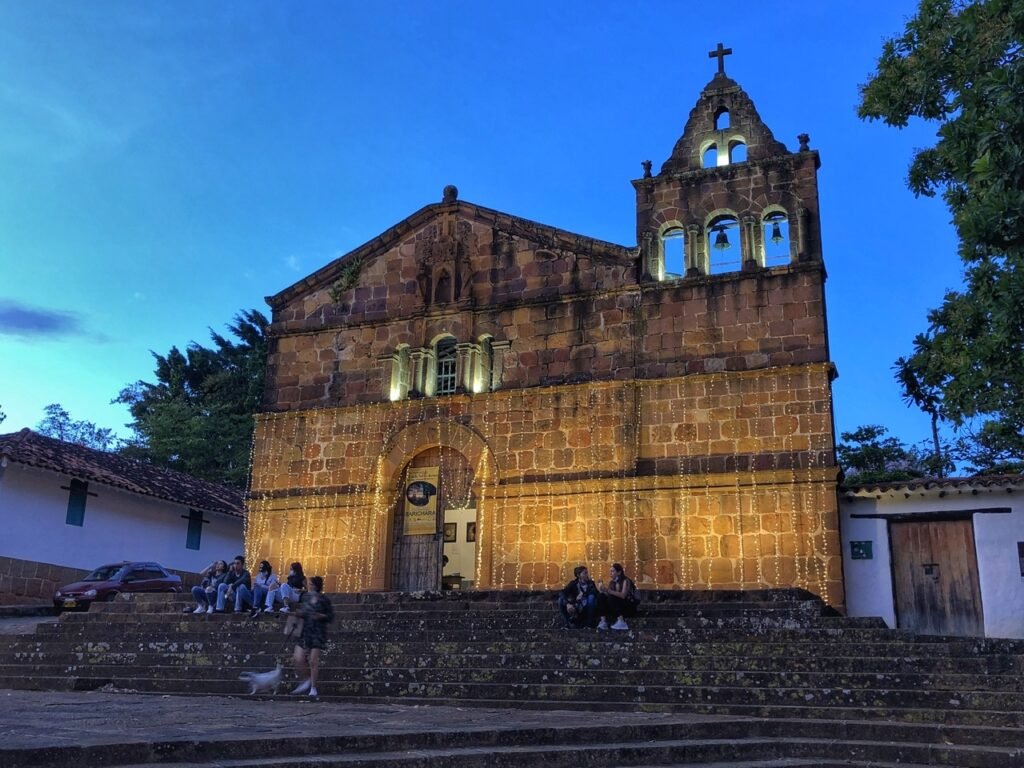
Capilla de la Santa Barbara, built in 1797, is a diminutive eye-catching church at the top of the town which in reality isn’t that far up, although google reviews make it seem like a booty-busting jaunt. It is next to a fantastic overlook of the town and mountains.
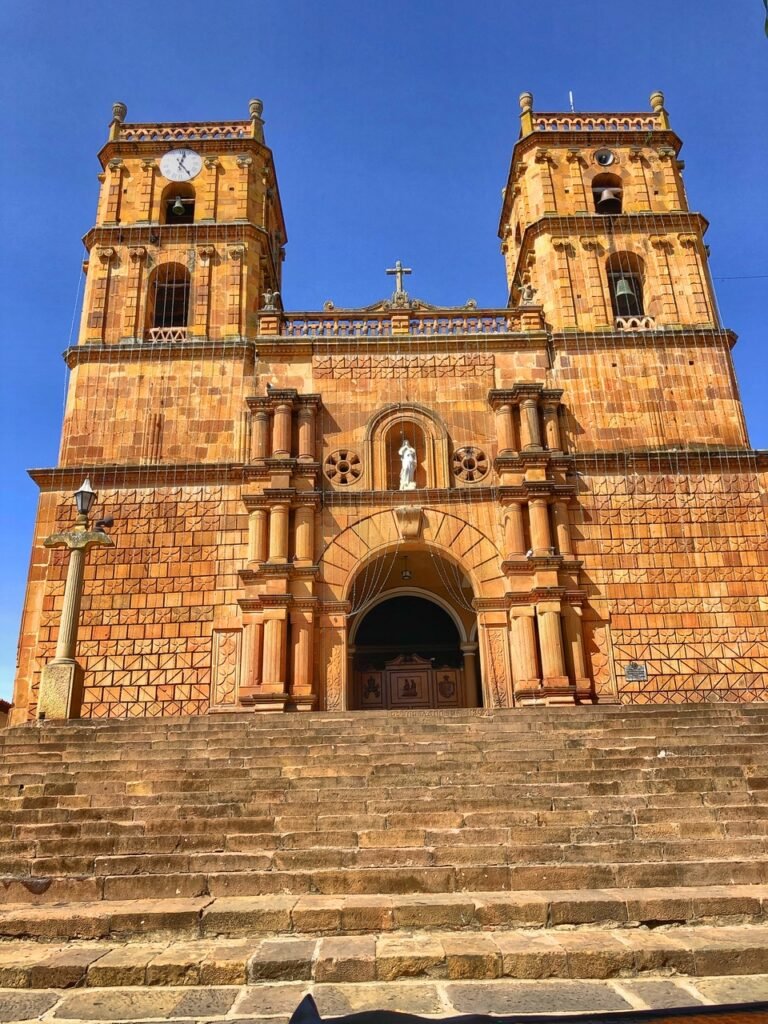

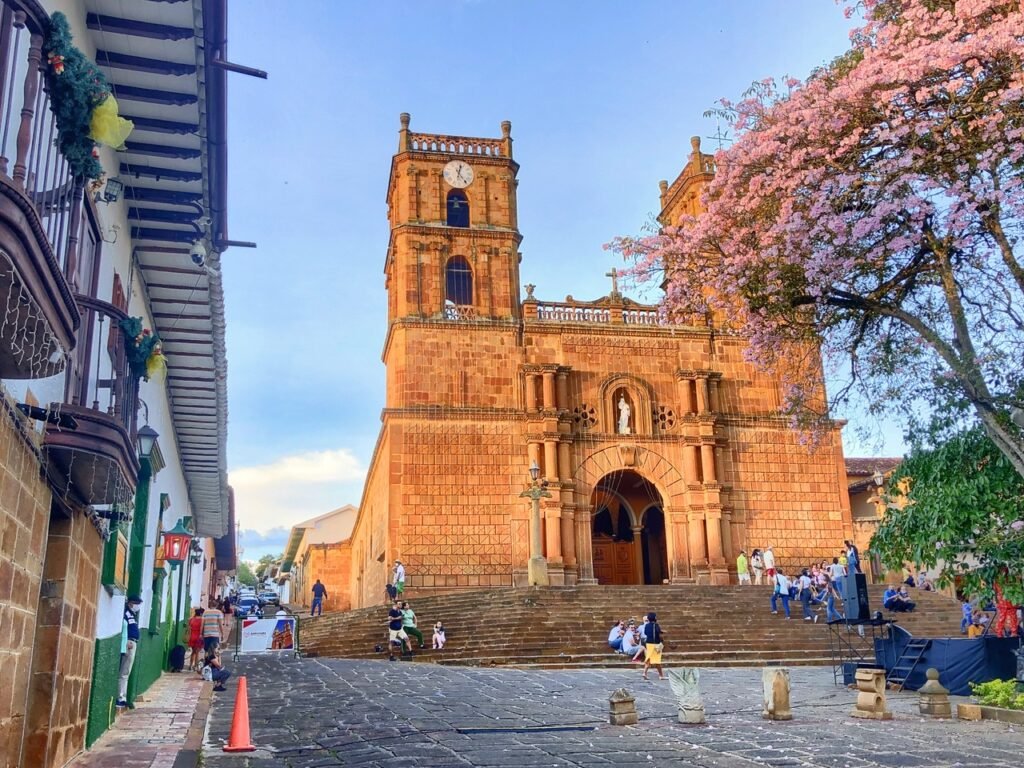
The Templo Parroquial de la Inmaculada Concepcion is the town’s crown jewel and has great historical significance. It sparkles at night for Christmas.
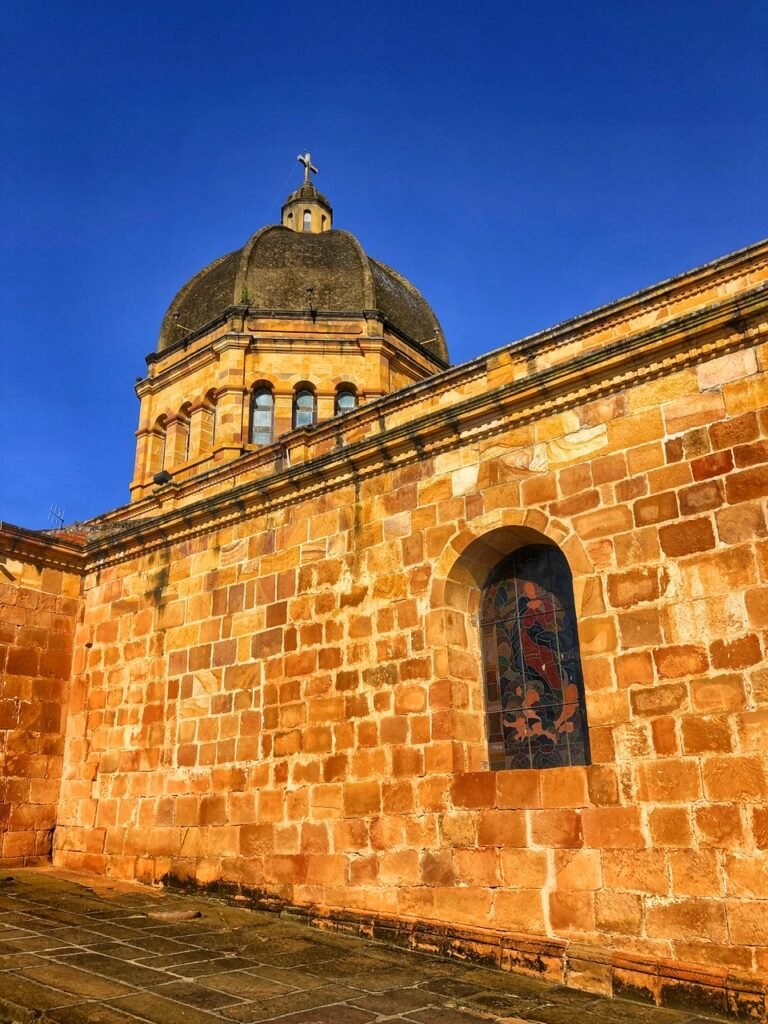
And each day during the golden hour.

Another church practically radiates at sunset.
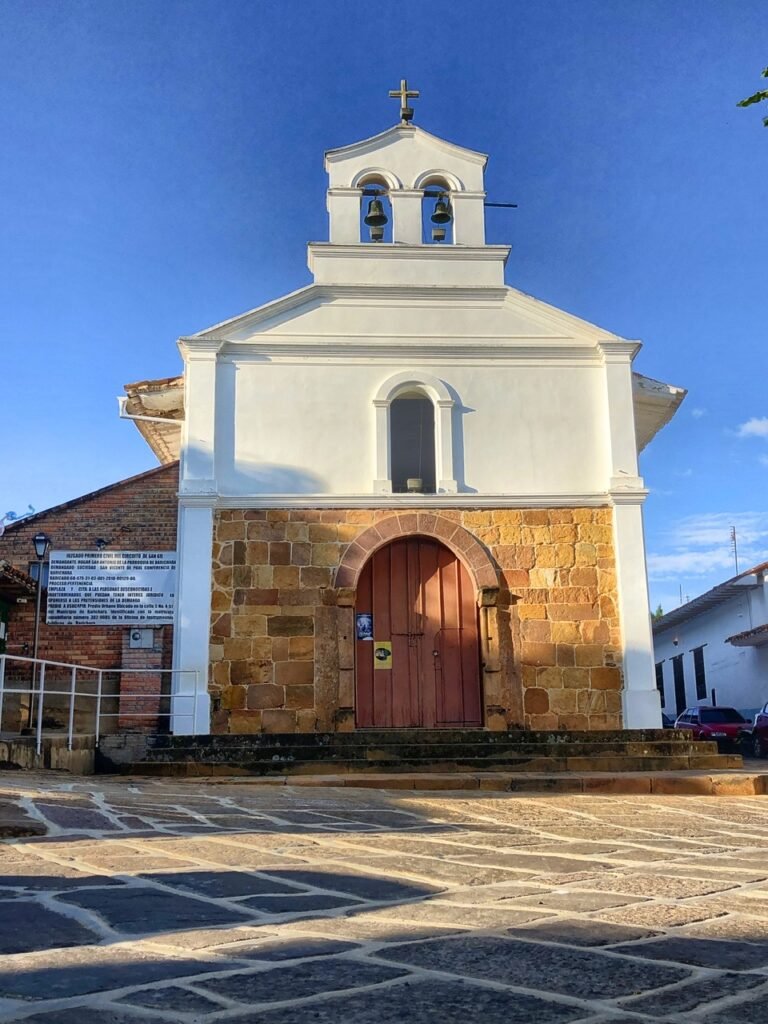

And yet another church…Capilla San Antonio. But what made this church striking? This tree drooling with Spanish moss right next to it.
Visiting the Miradors
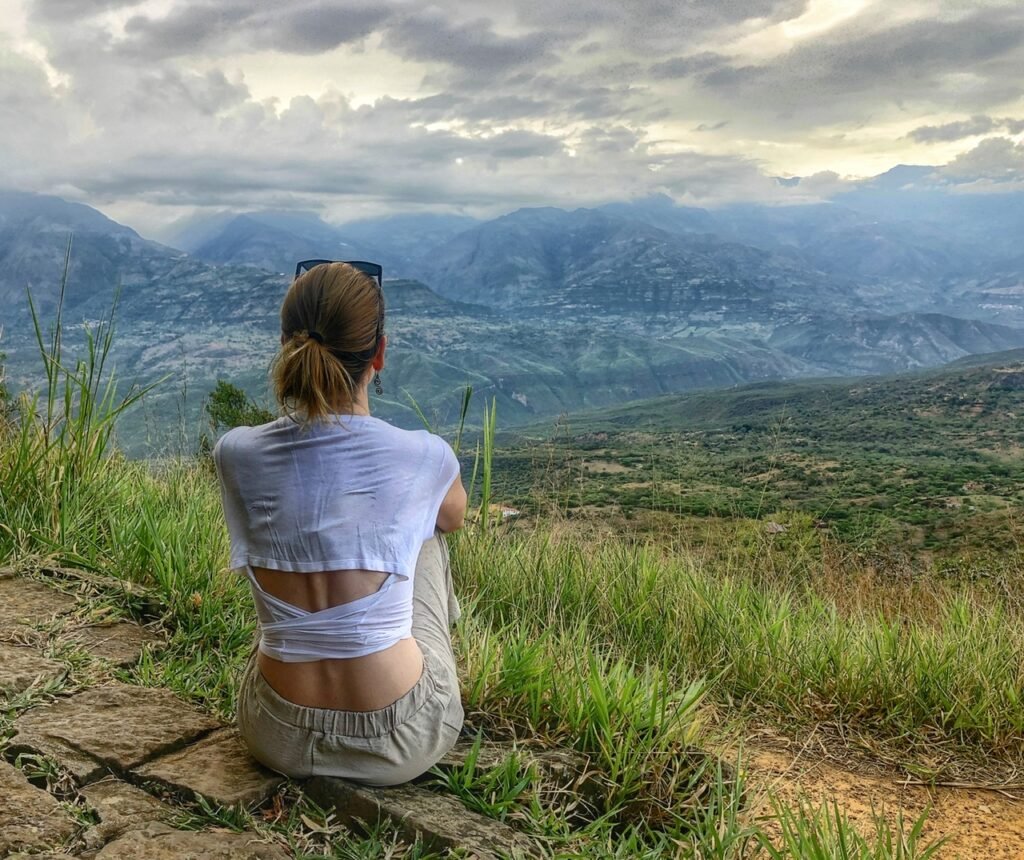
The surrounding Andean vistas couldn’t have made a more perfect backdrop for the little town of Barichara. Soaking in the view at the Mirador of Barichara.
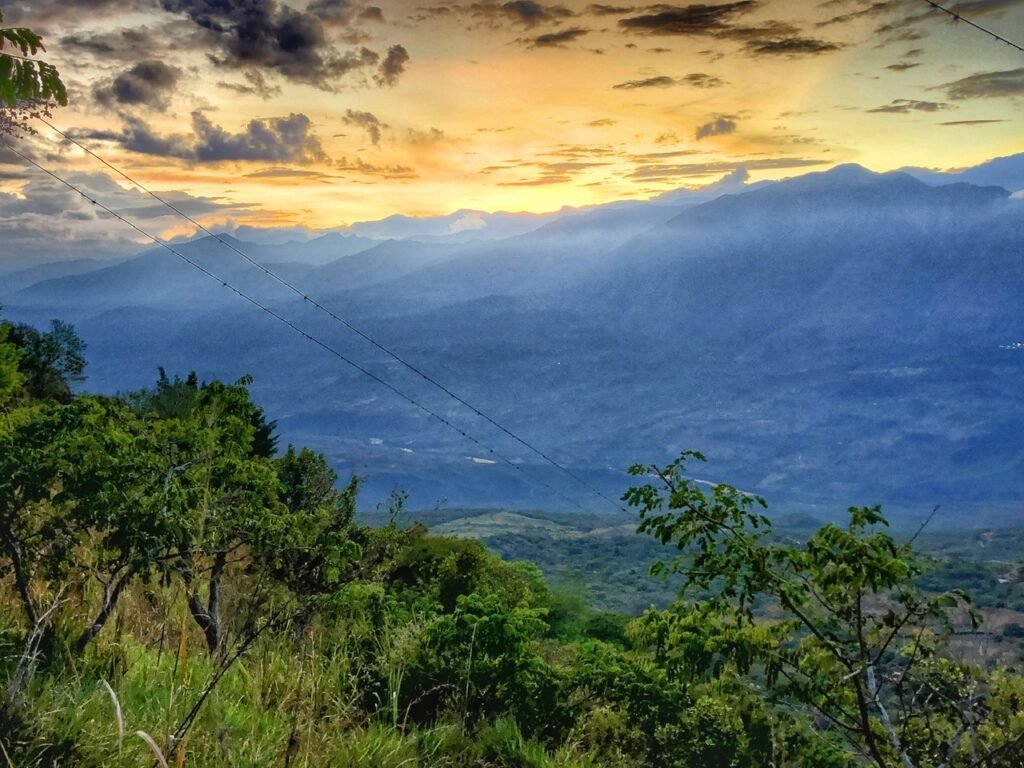
Catching sunset
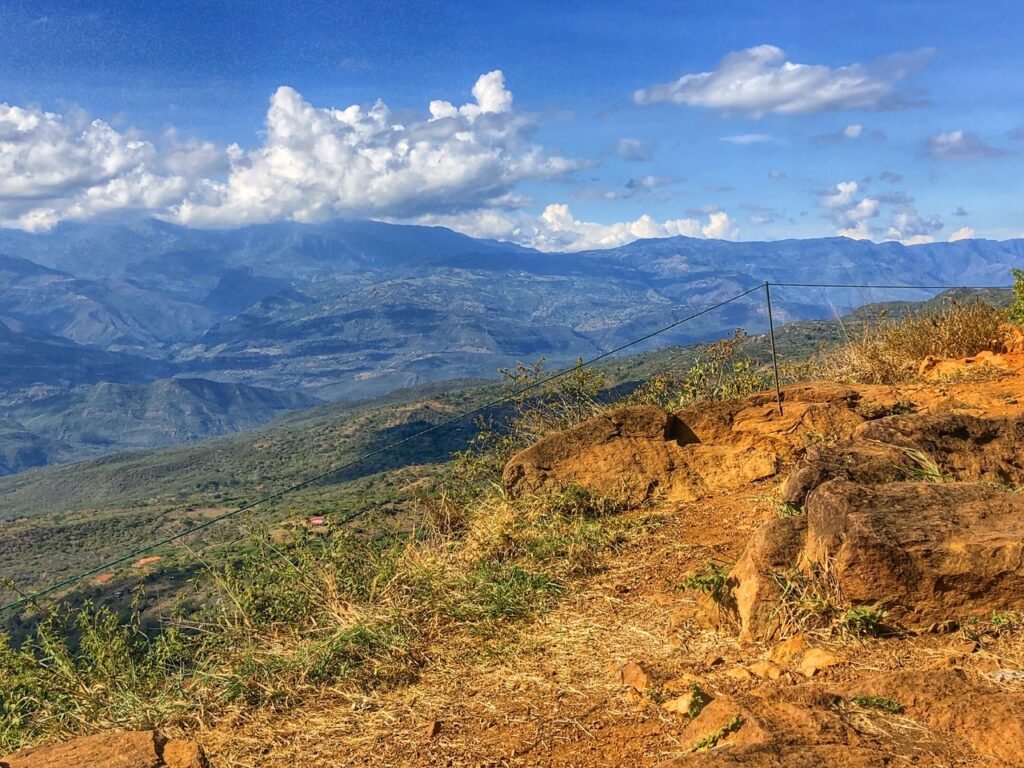
A view from the Mirador Salto del Mico, which funnily translates to Monkey Jump Viewpoint. There were no monkeys here, however.
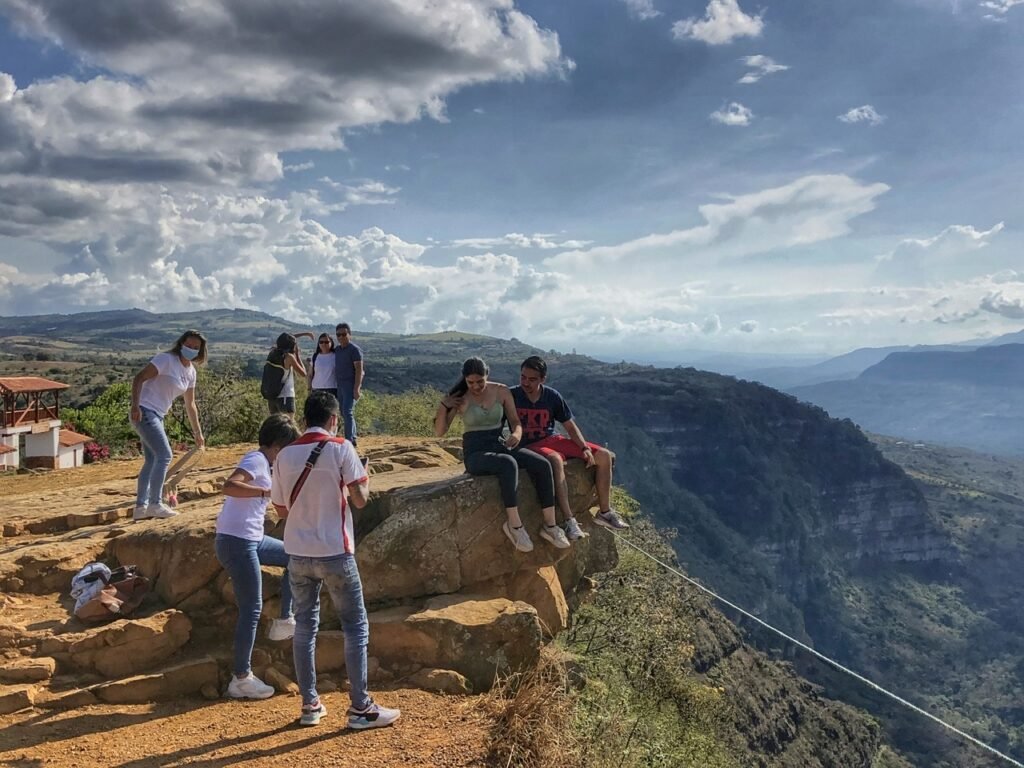
Only us daring human varieties, which scrambled to get the dangerous-looking Instagram photo from the edge of the rock.

You can’t get the full effect because there were humans in the background which refused to move, and we had to cut out.
Visiting the Cemetery



Barichara also has one of the most purposely cluttered, yet eclectic and beautiful small-town cemeteries we’ve ever seen. Many of the tombstones feature objects from the lives of the departed…iconic hats, favorite guitars, and for some special cases, even sculptures of the person who lies underneath.
Shopping in Barichara
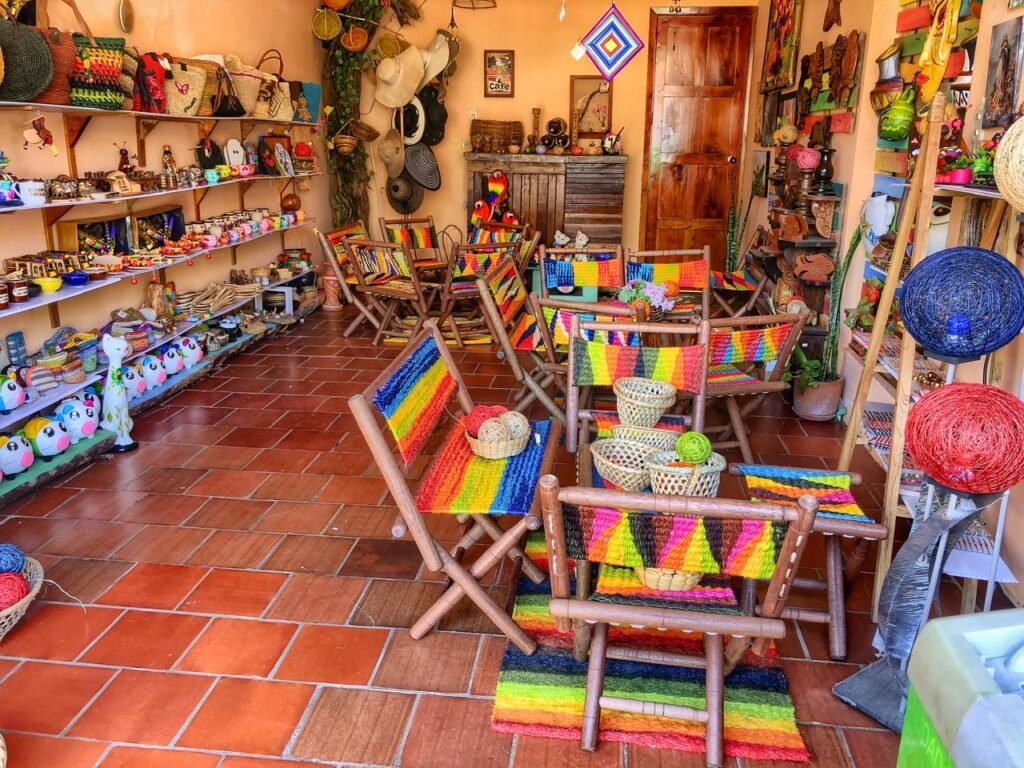
The shopping is plentiful and a terrific value in Barichara. Our friend took home a hand-woven stool and rug set for about $30. She had to buy a suitcase to tote it back in, but it was well worth it for these unique items. We always get a bit nostalgic for our place in Portland and how cutely it was decorated when we see such things.
Eating Out in Barichara
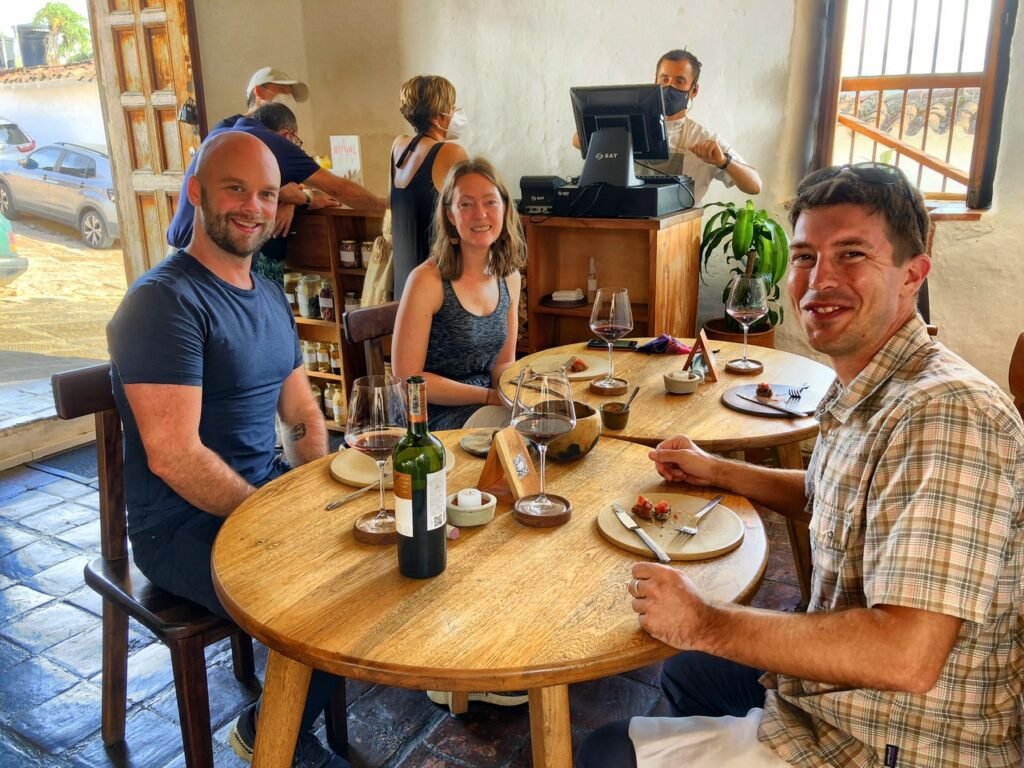
Abby and Alex treated us to an absolutely exquisite and mouth-watering meal at Elvia, which is a top 5 restaurant in Colombia and top 10 in Latin America. We were beyond appreciative and so impressed by the presentation of the food as well.

And of course it started with a bottle of fine Chilean wine.
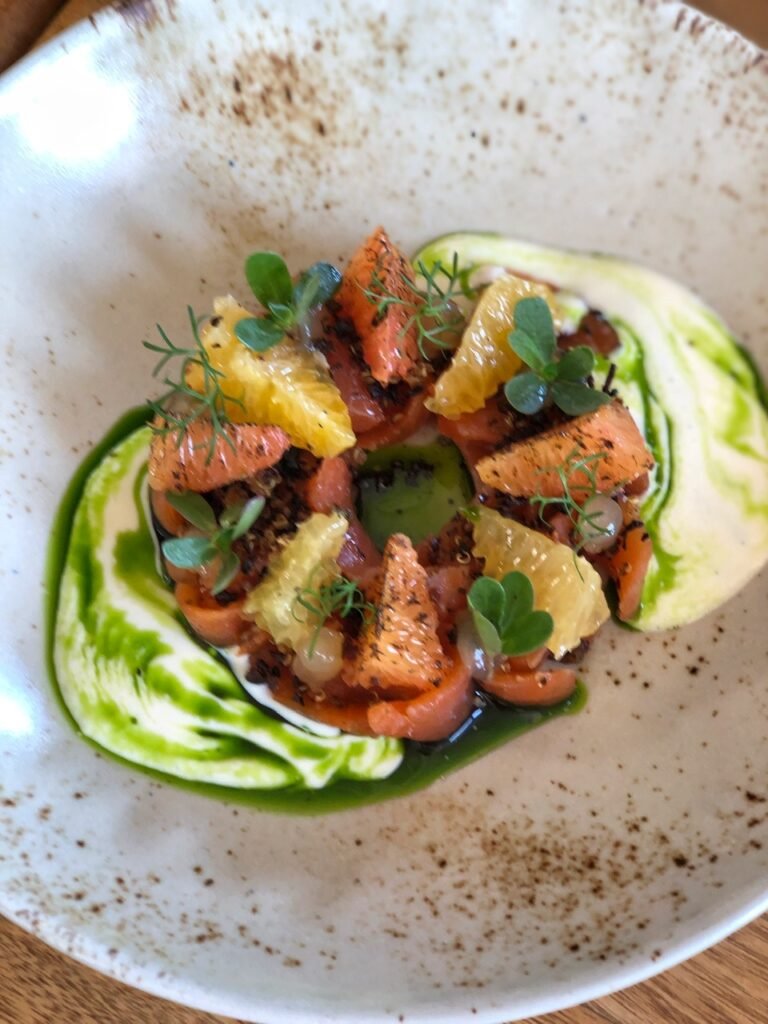
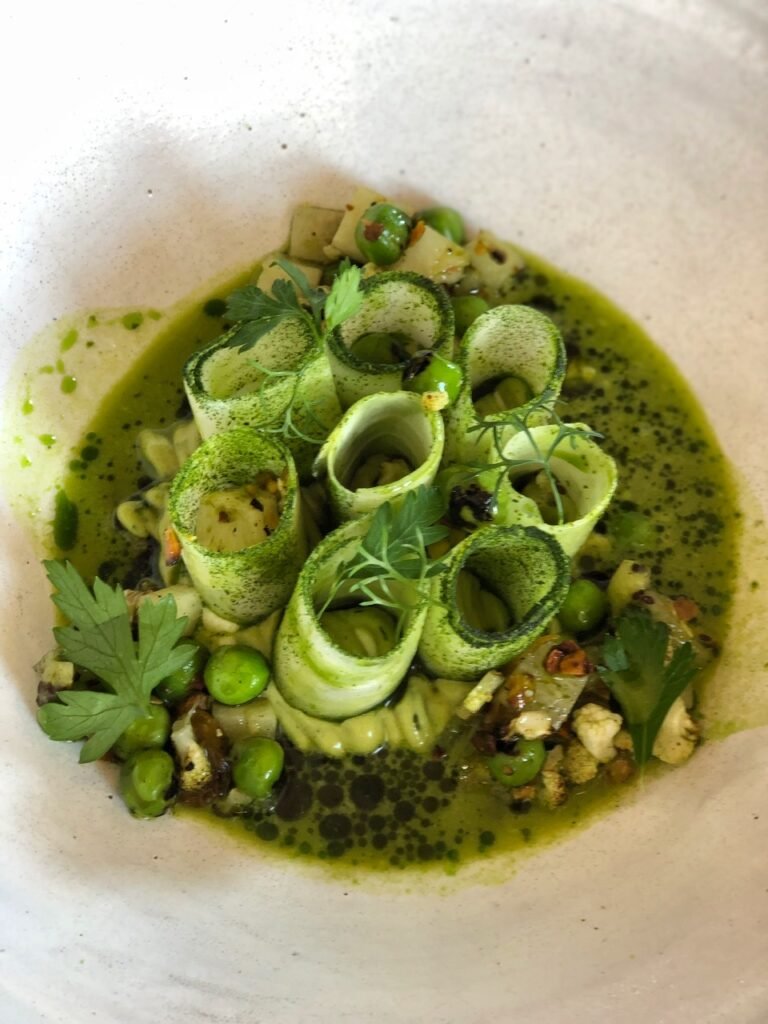
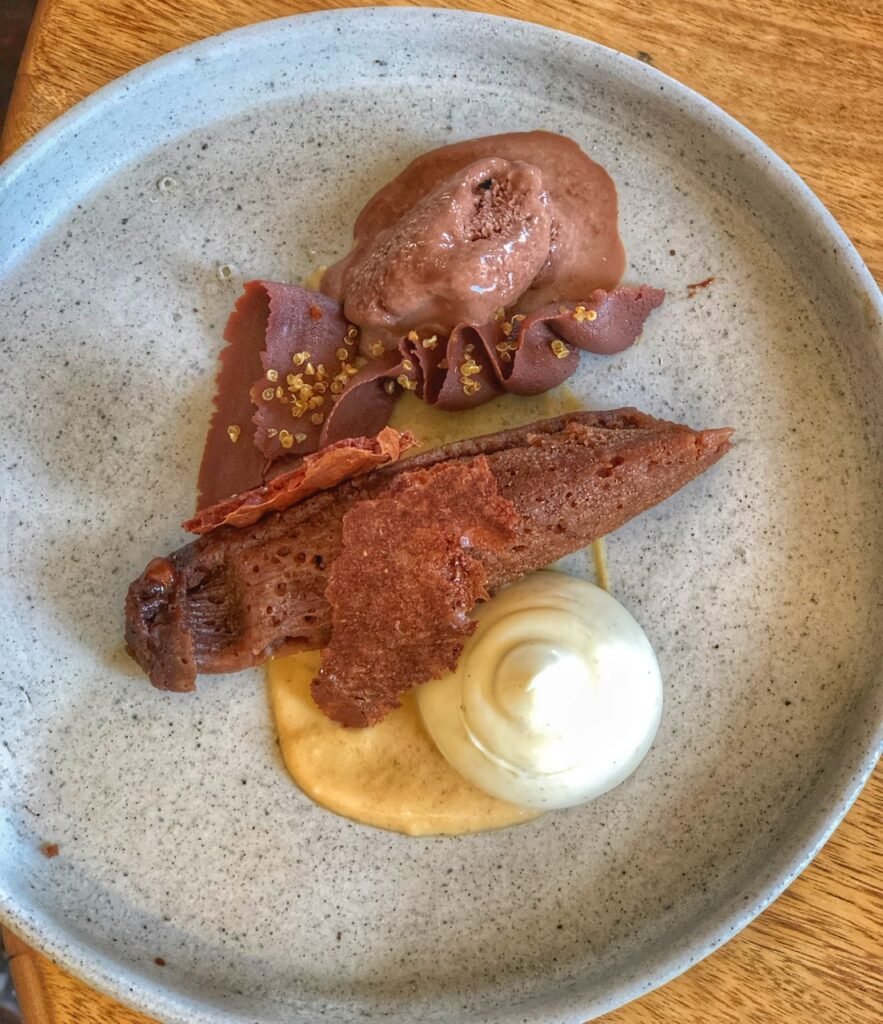
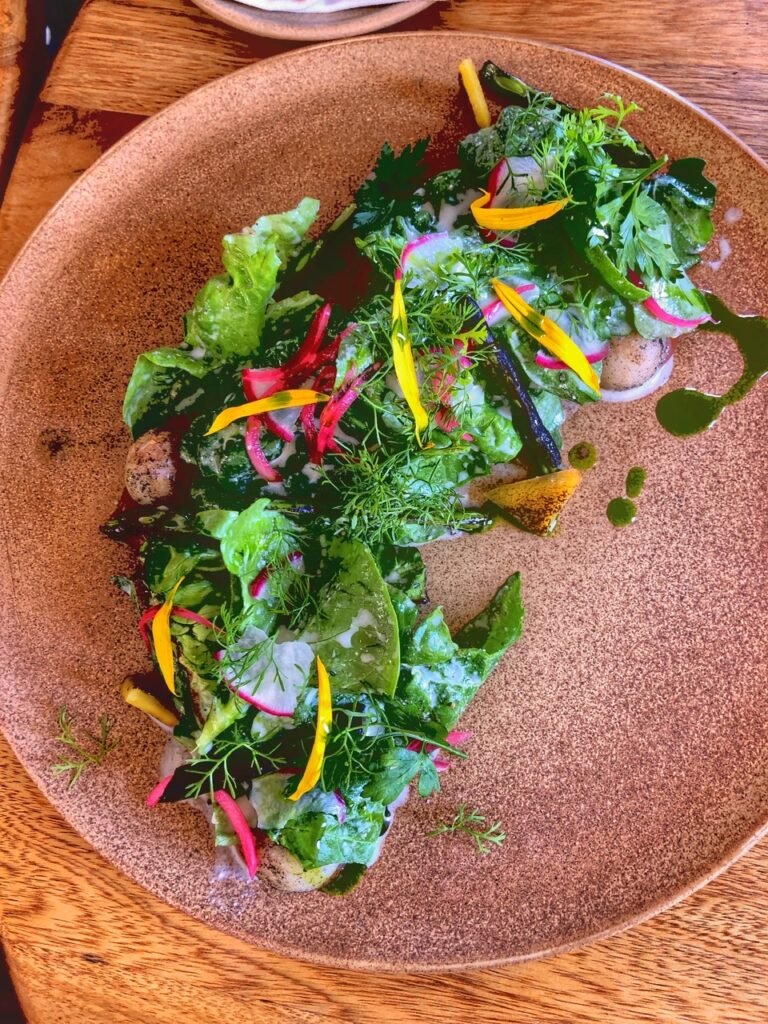
The appetizers and dessert clockwise from top left:
- Citrus Cured Trout, yogurt and dill vinaigrette and toasted ants with pelao corn. And yes, ants. Barichara is known for their (big-butt) ants. They were definitely the fanciest bugs we’ve ever had. ?
- Coconut ceviche and guaca tiger milk with avocado foam verdolaga & crispy arracacha
- Dessert: chocolate wrapped cardamom cream and iced coffee chocolate, caramel mousse and banana quinoa
- Garden salad mix of lettuces and herbs , roasted vegetables and seasonal fruit
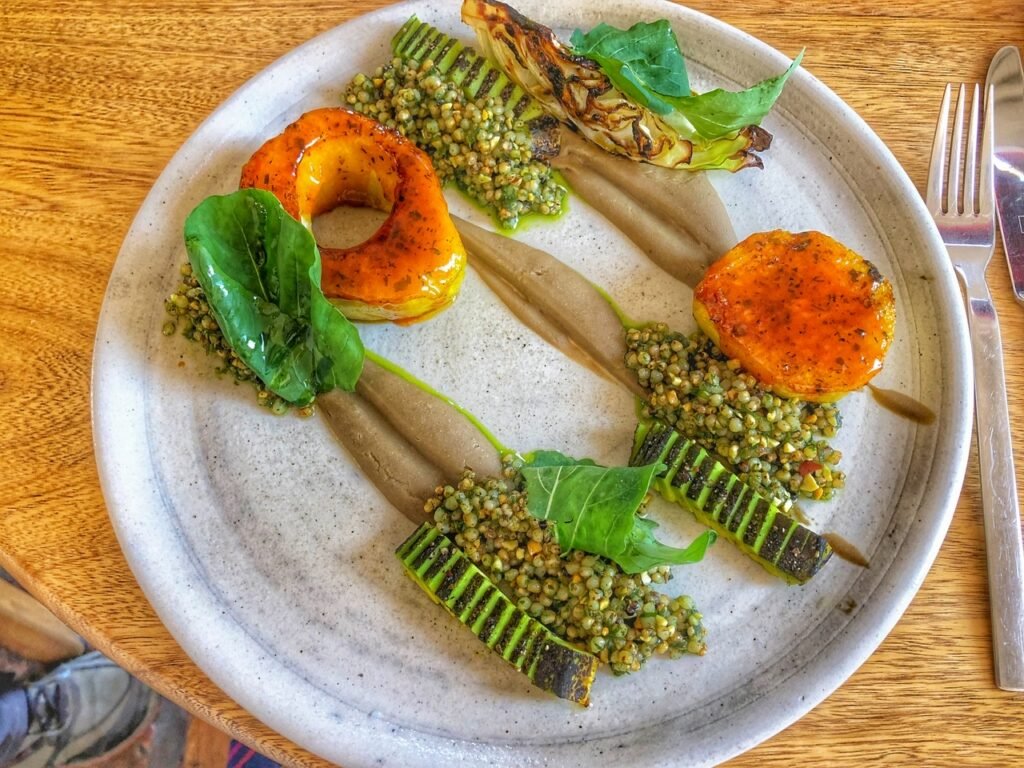
Mandy’s main course: Grilled Yota Steak (not a steak) creamy lentil and coconut, mushroom millo and herb salad
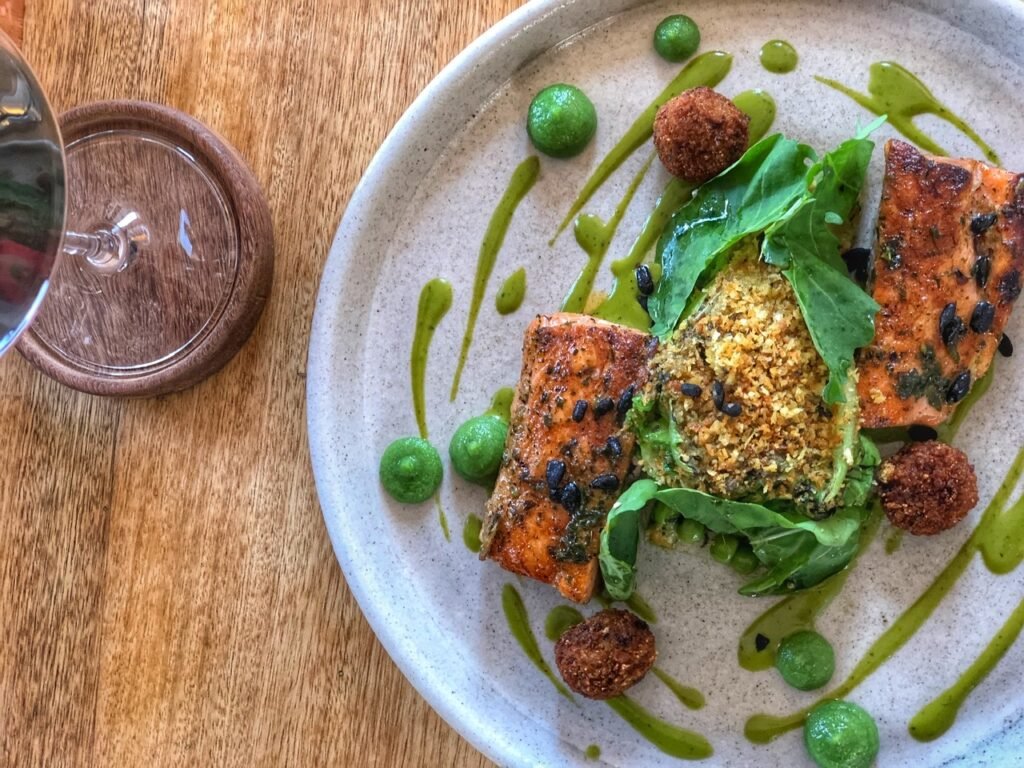
Greg’s main course: Old fashioned trout, roasted banana heart croquettes and pea salad. Absolutely amazing!!


Abby….and….Mandy….after wine.
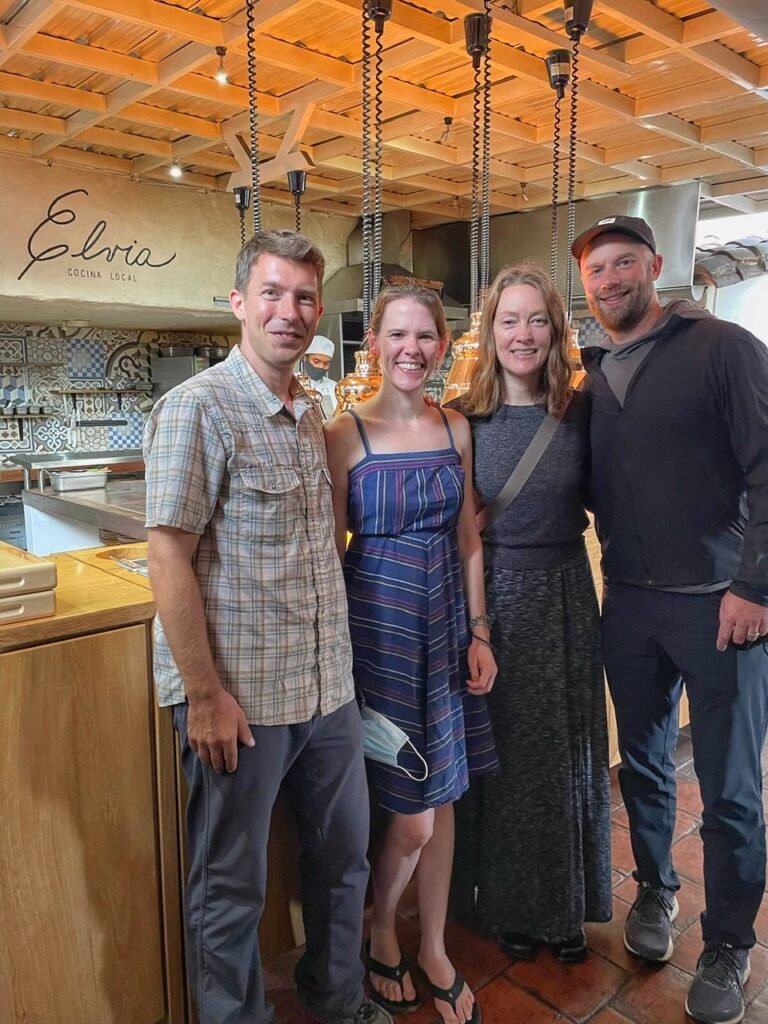
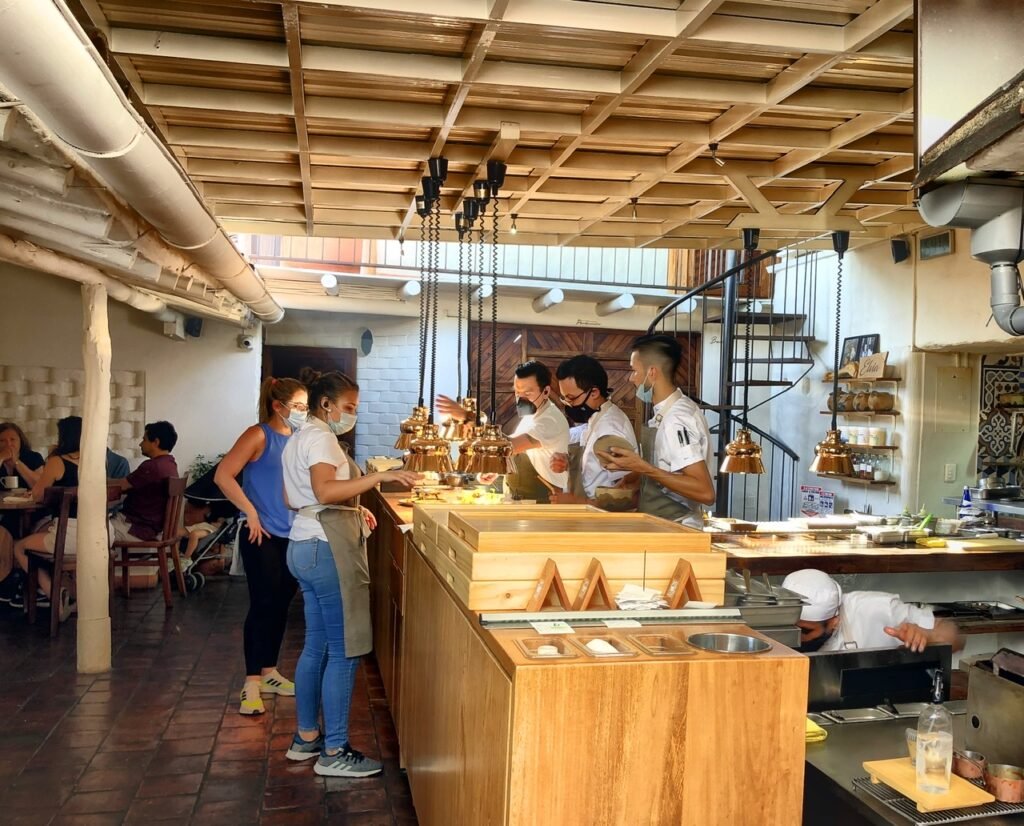
Loved the open kitchen concept.


Mandy and Abby had the giggles after dinner. Wonder why?
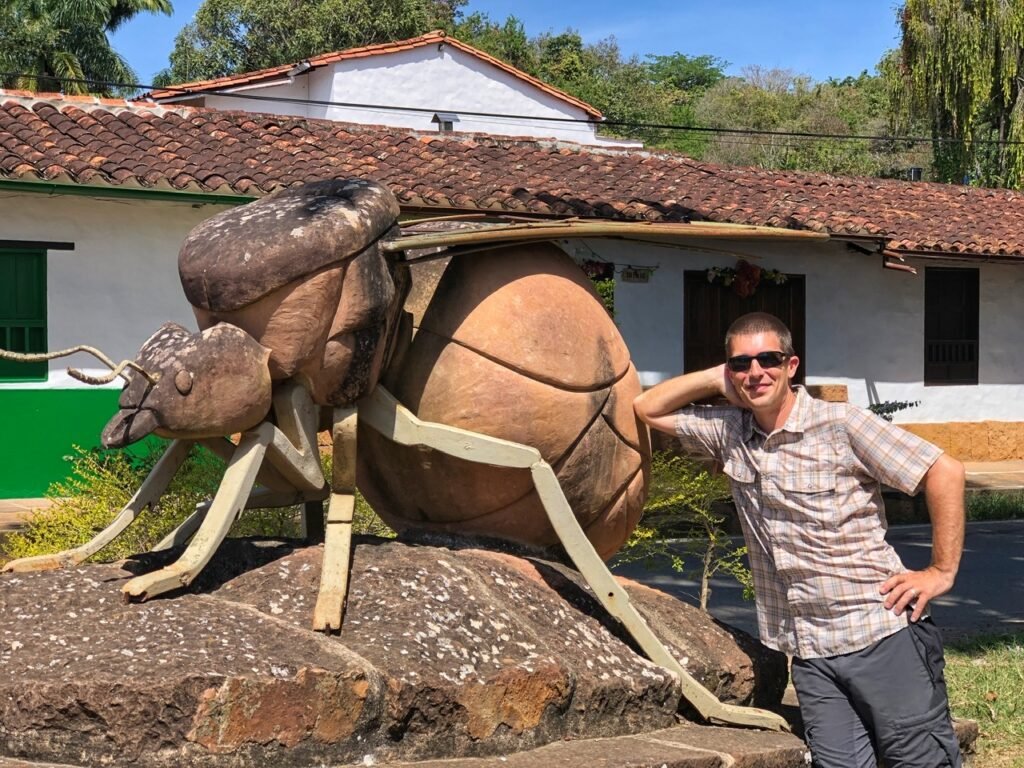
When we weren’t devouring gourmet delights at fancy restaurants with our kind friends, we were trying other local finds. After all, Barichara’s real claim to fame is the one that Greg is getting friendly with…the big-butt ant. Known in Spanish as “hormigas colonas,” the brown cock-roach sized insects are roasted, salted and eaten right out of the jar como peanuts. They are considered a delicacy and can bring in more than 10 times the price per pound as Colombia’s world-famous export…coffee. This means, a day’s wage for a few pounds of ants. In Barichara, the ants are sometimes used as a pizza topping or crunchy garnish in gourmet dishes, which we had at Elvia. We had them straight out of the jar in 2014 but didn’t really feel the need to repeat the fistful of large-assed ants tasting like earthy, days-old popcorn.
Apparently, indigenous groups have been eating ants for centuries. They passed on the tradition to Spanish conquistadors and the habit stuck. One restaurant owner who specializes in ant dishes said, “It’s our version of caviar.” Caviar is is a fantastic comparison because the princess ants are bloated with eggs, hence the big-butt nickname, and are the ones people try to snatch, roast, and eat. However, catching them isn’t an easy process. When the locals collect the ants, they must wear ankle-high rubbers boots for protection and work very fast since smaller soldier ants are tasked to protect the princess ants and inflict painful bites that draw blood. (Theworld.org)
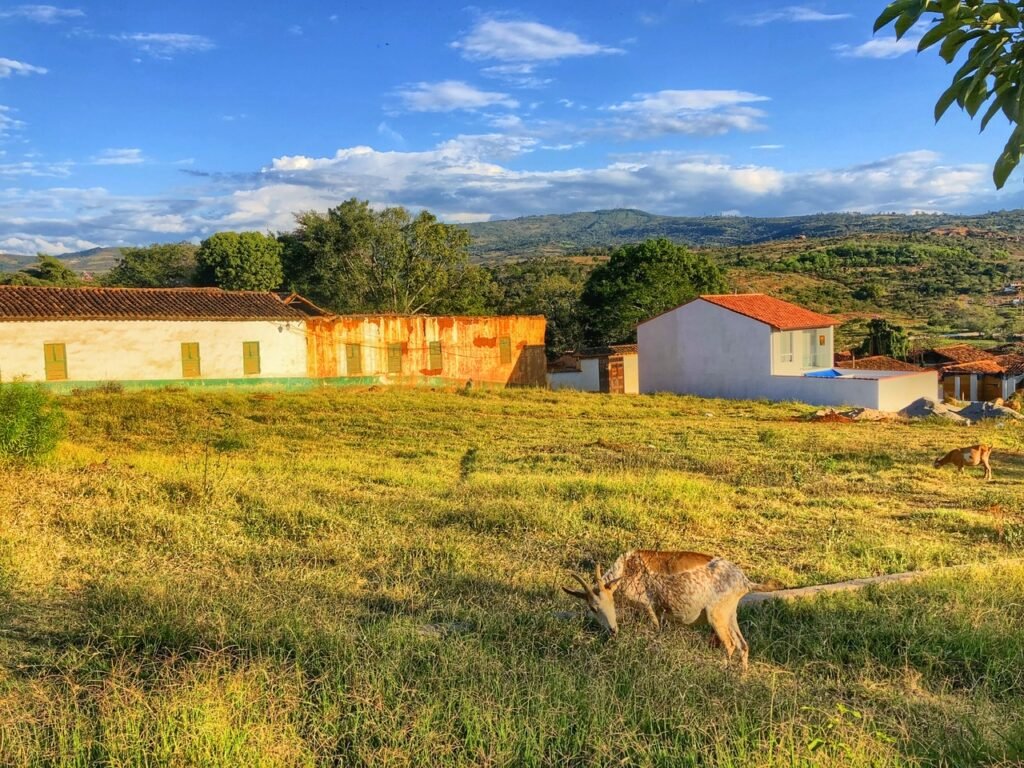
Another delicacy in Barichara is Cabrito….grillled baby goat with “melt-in-your-mouth” meat. The cabrito is accompanied by pepitoria, which is supposedly better than it sounds…goat innards, blood and rice. We couldn’t tell you about this one. Sad and ick.

Ice cream, on the other hand, makes Barichara inviting, just like most other small towns in Colombia. After many months in the country, Greg finally takes the plunge and orders his first queso and arequipa paleta. If you know Taco Bell Spanish, you’ll know that queso means cheese. It’s a sweeter cheese, combined with Colombia’s sickeningly sweet caramel-like ribbons, or “candy made of milk.” It was shockingly delicious. I mean, when your local choices are junk-in-the-trunk ants, a precious baby goat, or cheese ice cream, we know what we’re going for…
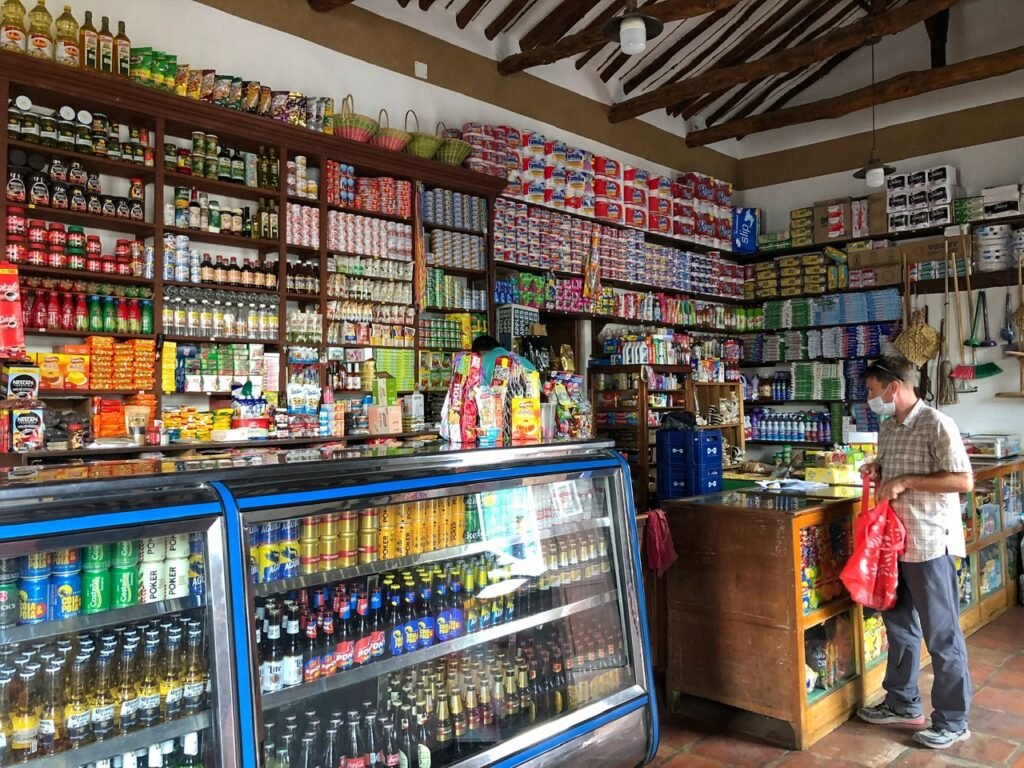
As you may have noticed, we absolutely love Barichara. However, this is the real reason we can’t see ourselves living here long term…the lack of grocery options. There is only one small market and the rest of them are the ‘ol, 19th Century-style “I’ll have one of those…” types which makes using your Spanish (and patience) absolutely necessary…for every single item. Also, of course, that means you have no idea what the price is…or how much sodium is in them…unless you ask…for every single item.
Taller de Papeles

Since 2001, a group of ladies have been getting together in a paper making workshop (Taller de Papeles) in Barichara to financially support single-parent women. This workshop is the number one employer in the tiny town of Barichara and a savior for women in search of a local job. The process is four months long and much of the paper evolves from the leaves of the Andean fique plant, which looks like a greener, more vibrant version of the blue agave plant used to make tequila. Surprisingly, other plants also make different shades and textures of paper, which include reed, pineapple, corn and even marijuana!
The cactus-like Andean fique plant (above) grows in warm, tropical climates and can be found in Colombia, Peru, and Ecuador. The long, prickly leaves are collected by the women in the neighbouring fields using big weaved baskets.
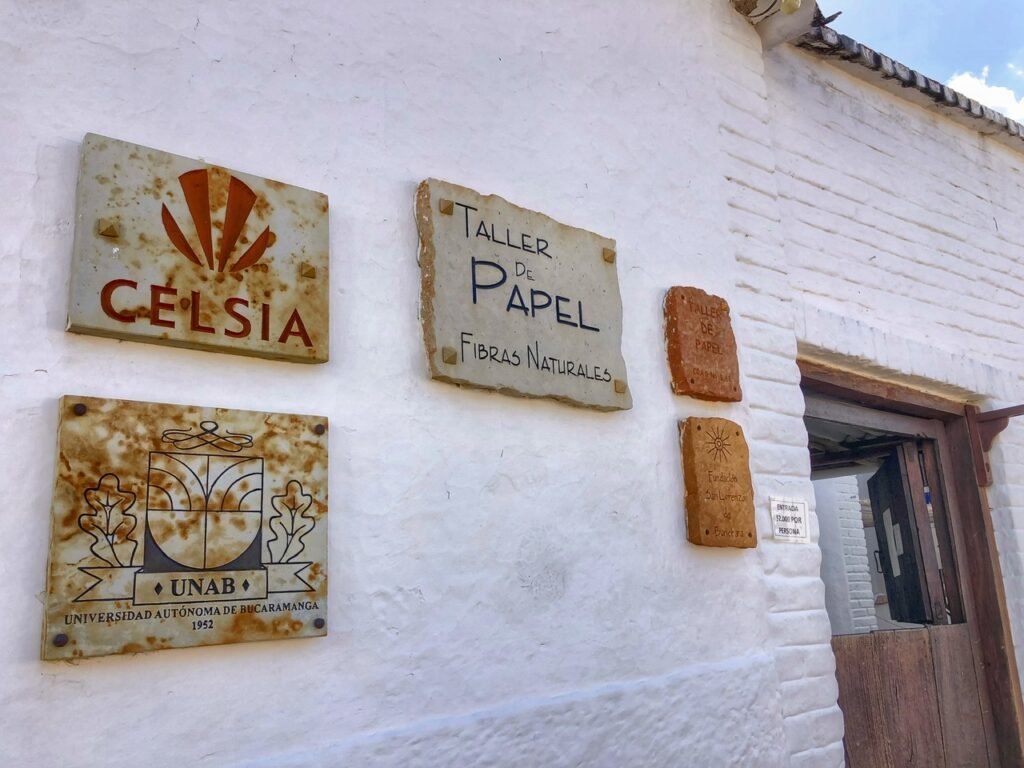
The outside of the workshop is unassuming and small. It cost $8000 pesos or $2 for the tour.
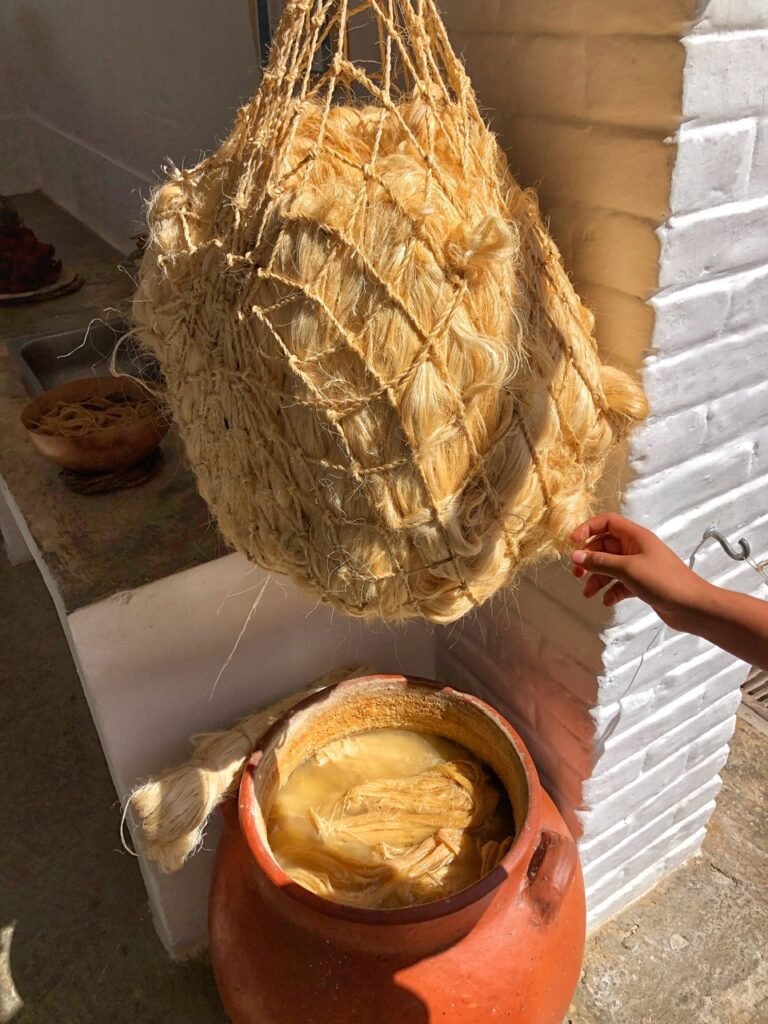
Back at the factory, the leaves are put through an extractor machine by hand to separate the skin from the fibers. The skin is discarded, and what is left are thousands of fine but tough white fibers. This wispy, hair-like material will form the base of every sheet of paper. They are then drained to remove all the excess water.

Before the fique fiber can be used to make paper, it must be softened. To do this, the strands are first soaked in calcium oxide and then coated in a gelatine and ash paste and cooked in large copper containers over a high flame. Once the fique fibers have softened, they are removed from the heat and rinsed through with cold water.

Now the hard work starts. Once the fique has been rinsed through, it is taken over to the “machacada” (meaning “bashing”) station, a centuries-old technique used to beat the moisture out of the fique. Using a wooden baton, the women bash the fique flat. Eventually, the fibers fuse together into a sticky, square-sized pulp.
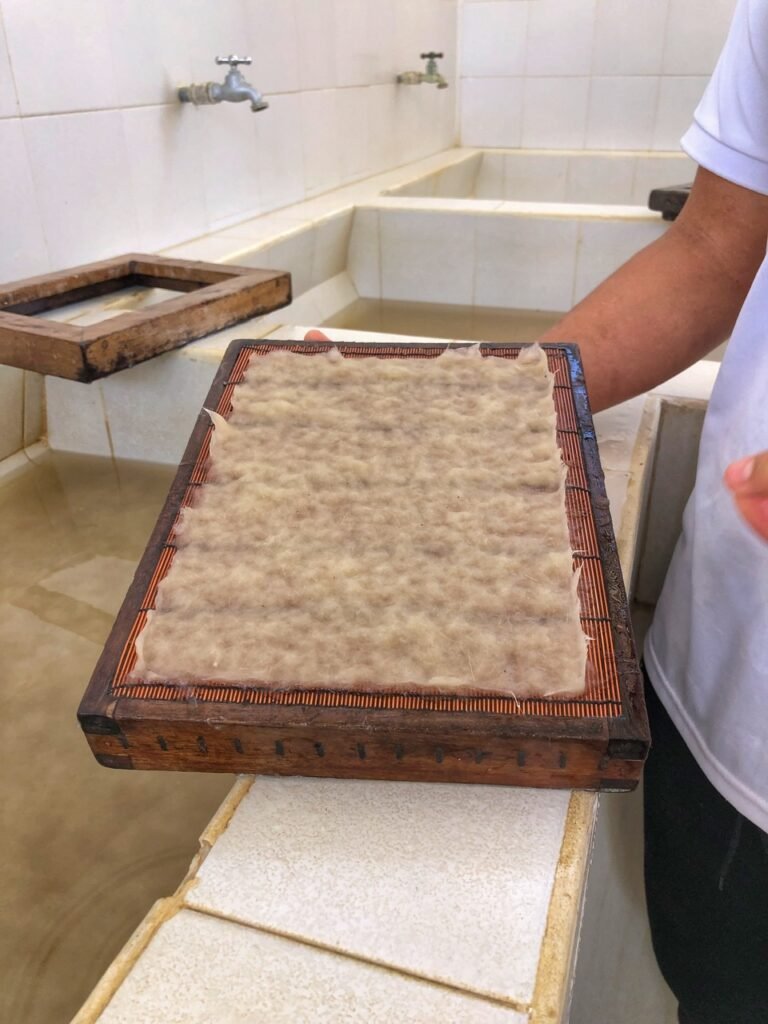
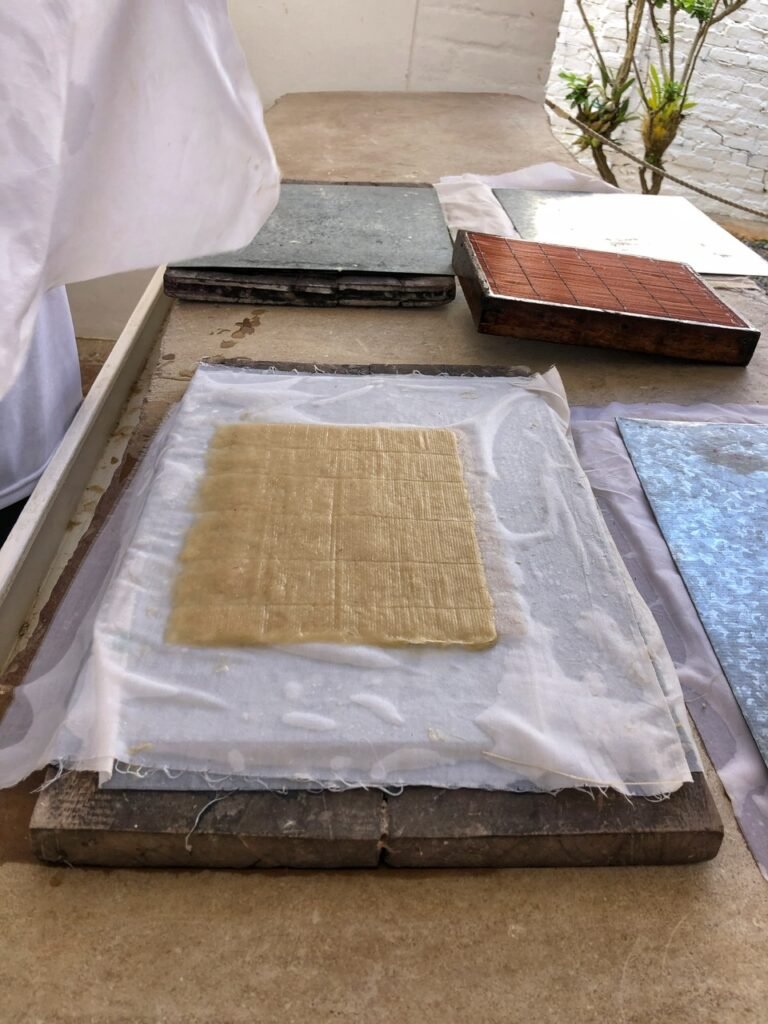
The pulp is now transferred to the sinks, where it is shaped by placing it in a mesh/wooden frame to make the classic A4 sized sheet. If the sheet is to be coloured, natural dye is added to the water at this stage. The sheet is then placed on a piece of canvas ready for pressing and drying.
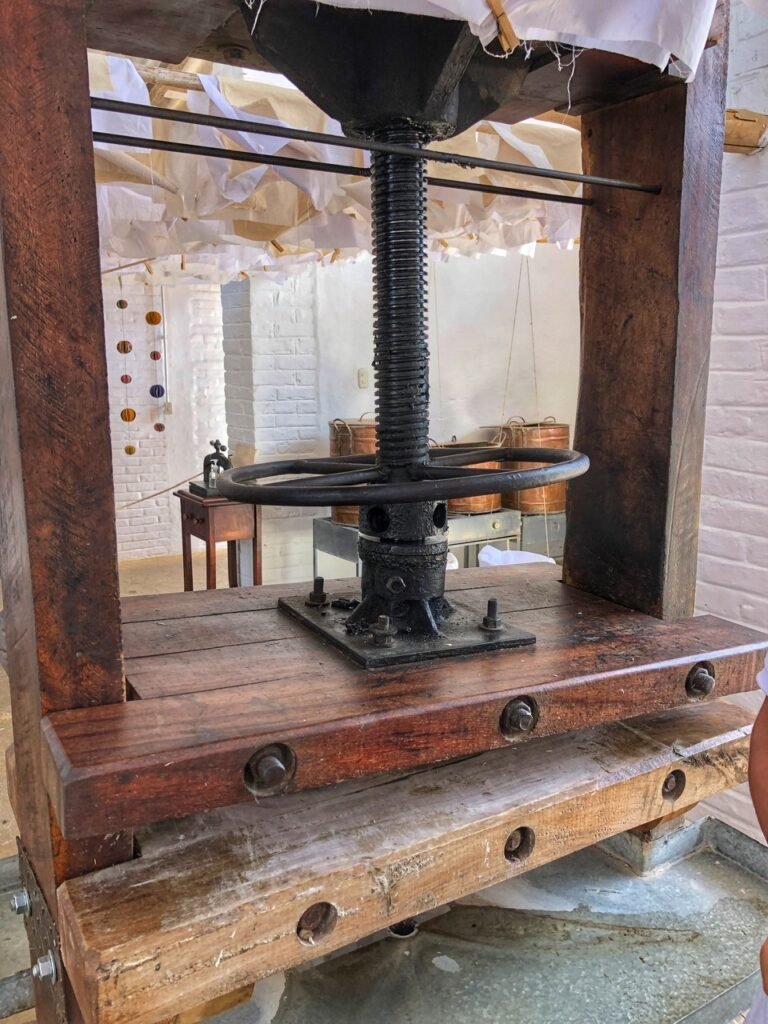
To remove the excess water, the sheet of paper is placed under the wooden press, which has to be hand-turned by the women using a huge steel wheel. The press was more than a century old and was left behind on the property from Barichara’s tobacco-making heyday (the press then would’ve been used to flatten the tobacco leaves).

Once every drop of water has been squeezed out, the sheets are hung up in the factory to dry naturally, filling the entire room with hundreds of fique sheets, which will later be sold (both as plain sheets and hand-made paper gifts and stationary) in the factory’s small shop. But before they do that, they have to be pressed once more. Source: https://nomadatravel.co.uk/artisanal-paper-making-barichara-colombia/
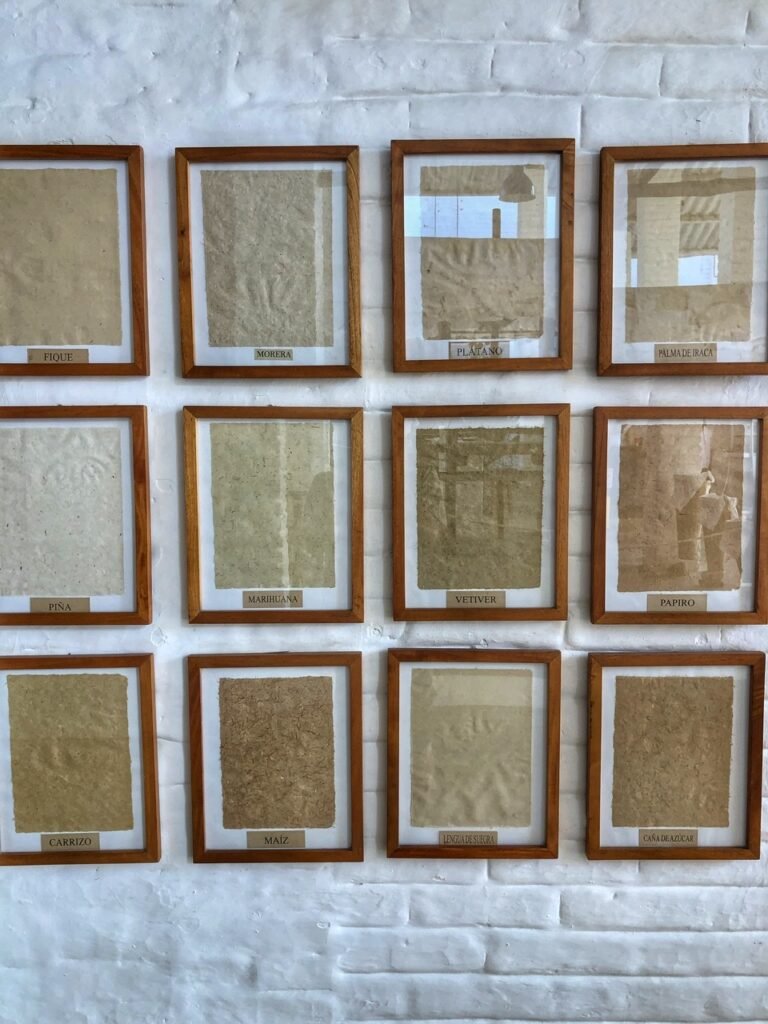
All the different types of paper they make using different plants.


The workshop also has a lovely garden where they showcase different plants used in the process, as well as some general Colombian eye candy called Lagrimas de la Reina, or Queen’s Tears. At right, native to Asia, the Torch Ginger nearly looks plastic. Maybe that’s how they got it here.

Sugar cane, also used to make paper.
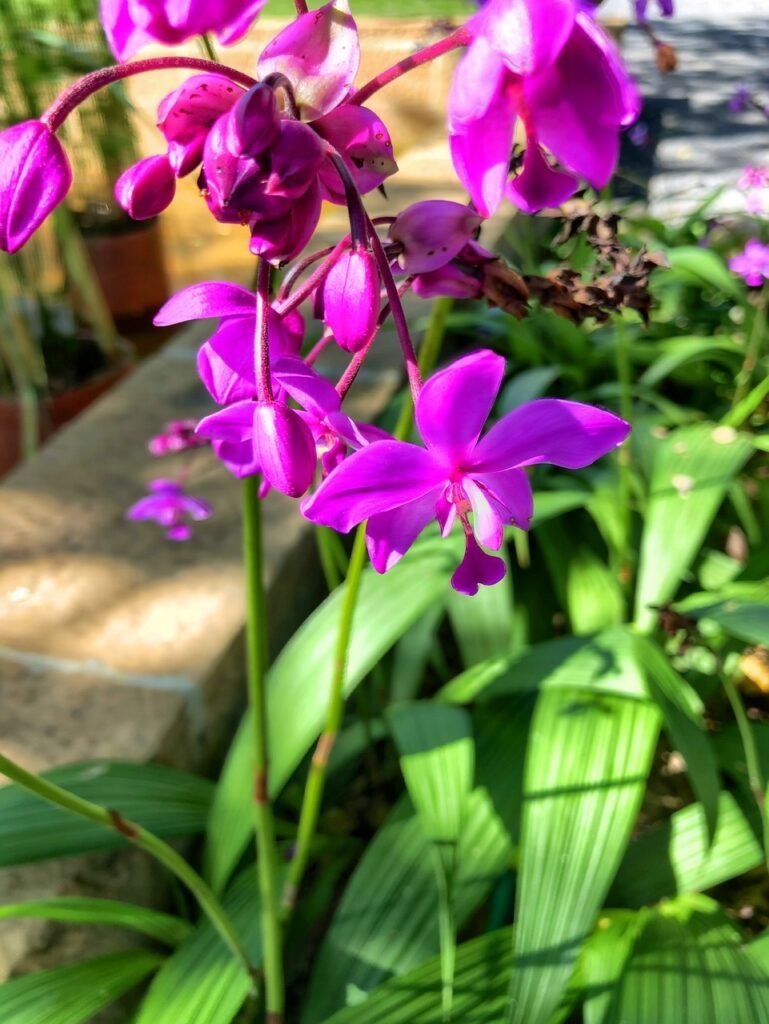
The Philippine ground orchid looks like it is losing its heart.
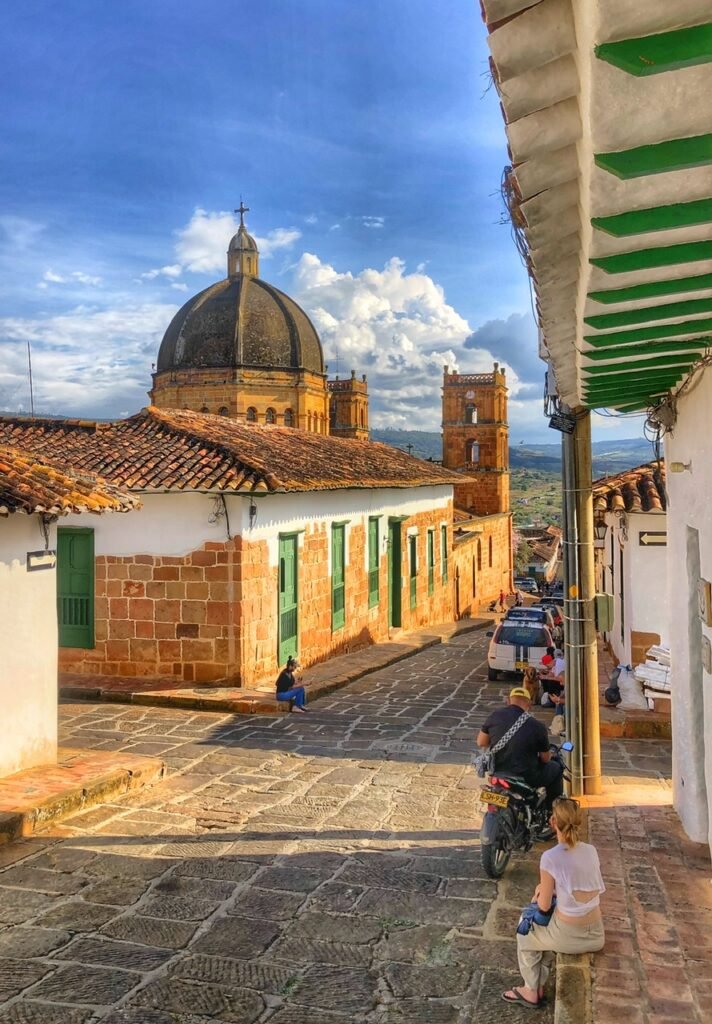
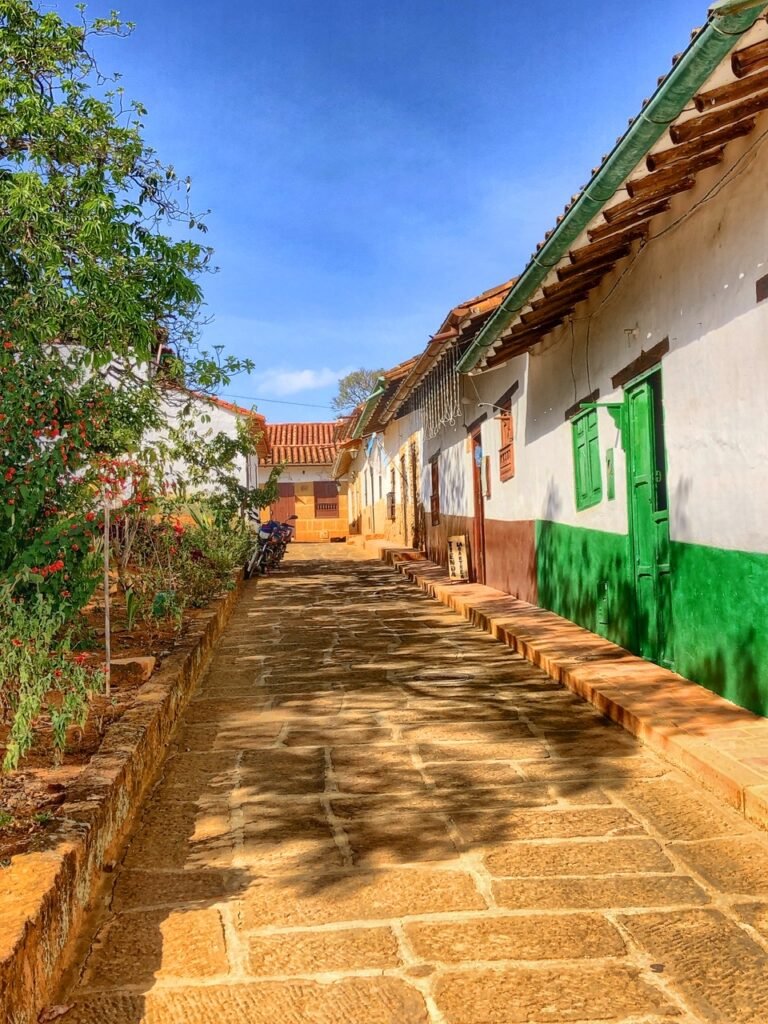
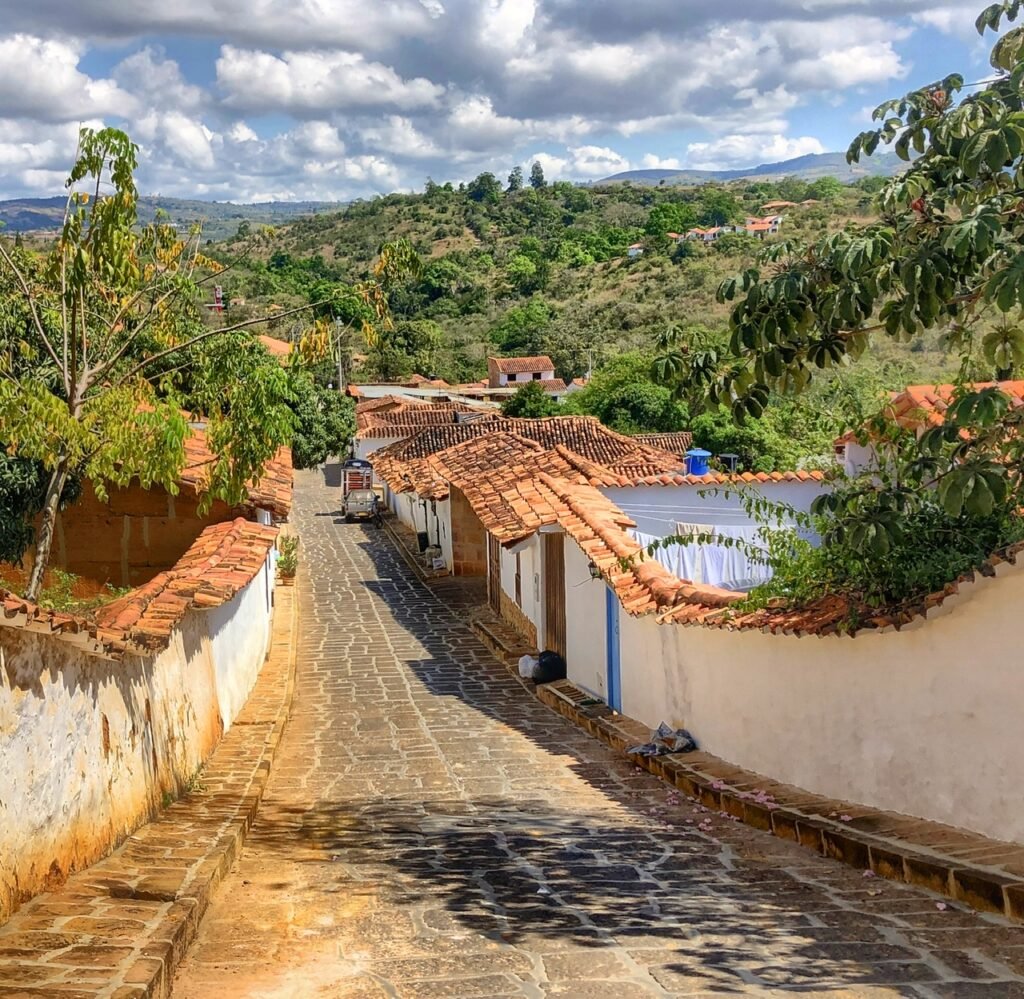

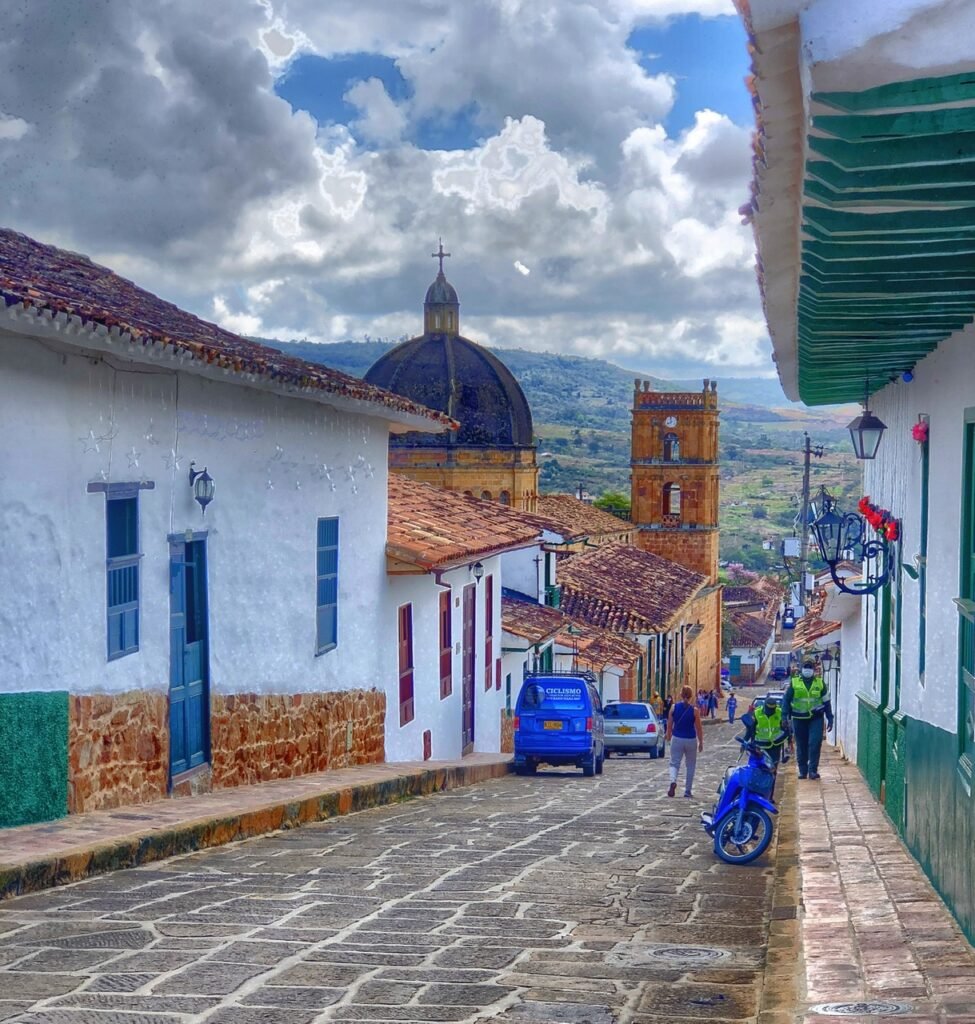
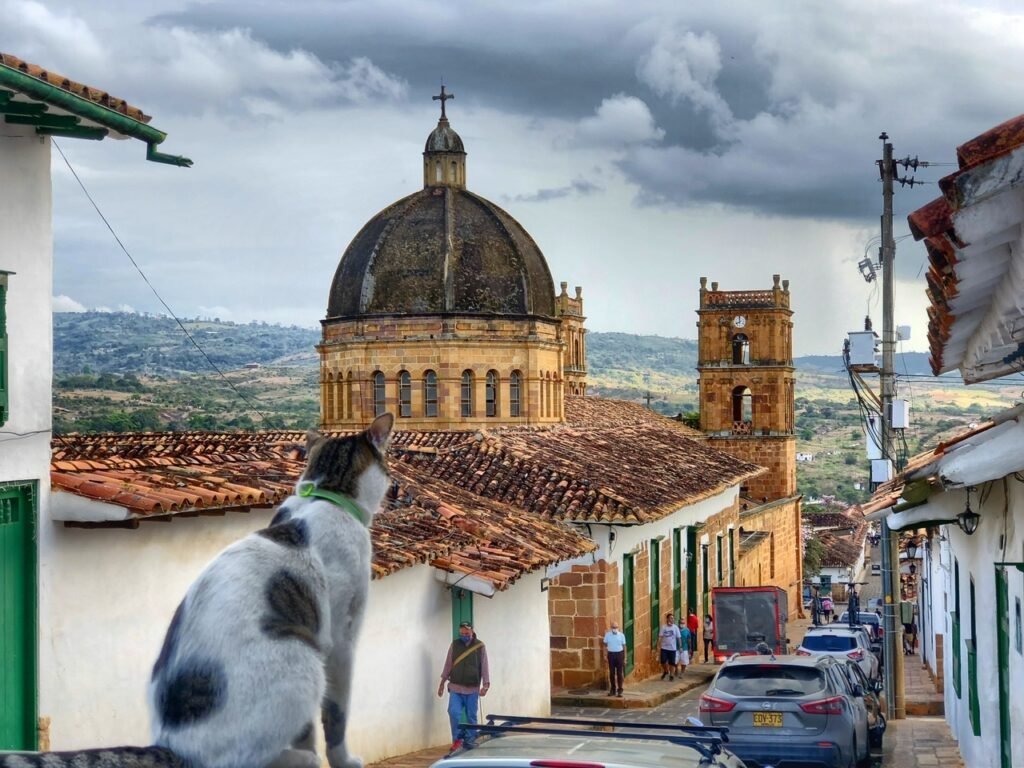
We felt the same as the orchid when we left Barichara….like a piece of our heart just fell from our chest. We’ve been a lot of places and for us, there is truly nowhere like it.

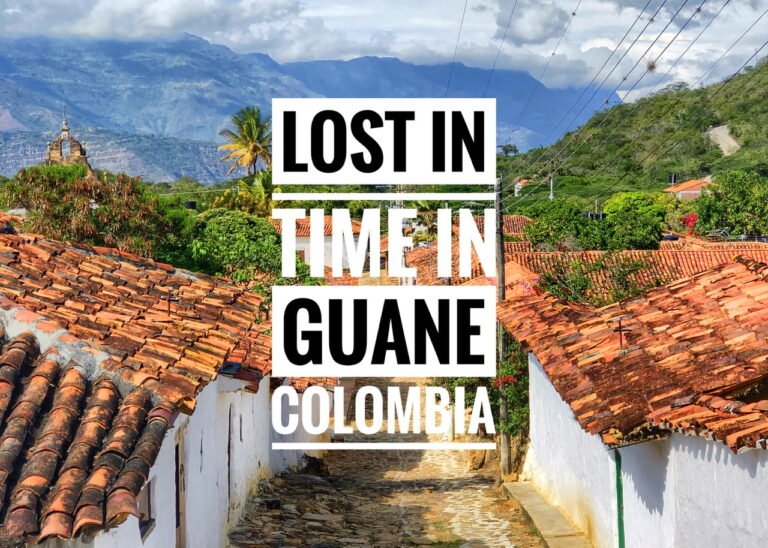
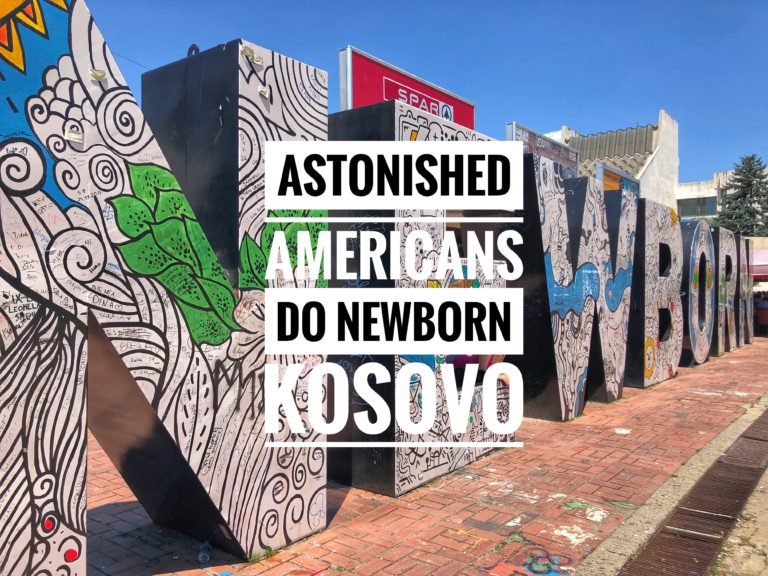

Absolutely loved this post! Bummer the grocery options are so limiting as I could totally see you staying here.
It’s a very special place indeed. And we’ll be back to rent long-term, but yes, I know. For us too… 🙁